Osaka, dubbed “Japan’s Kitchen,” may be known for its irresistible street food, but this time, put down the chopsticks and head to explore the city’s most popular autumnal spots.
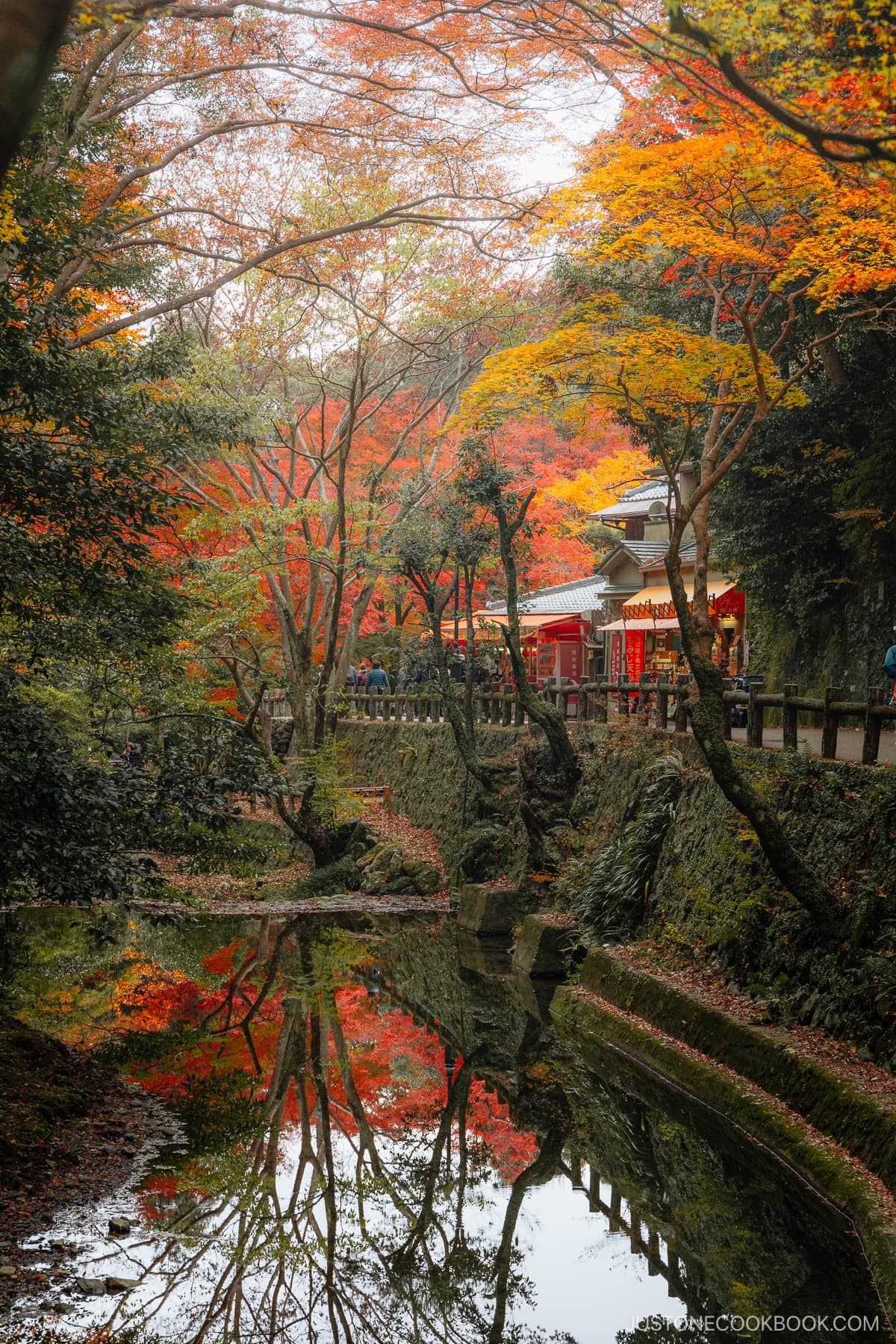
After experiencing Kyoto‘s magical autumn scenery, I headed south to Osaka to catch a glimpse of what the port city had to offer during the season.
We would resist the temptation of the city’s famed takoyaki and okonomiyakiand instead revel in its autumnal scenery, including more temples, castles, ravines, and waterfalls throughout the visit.
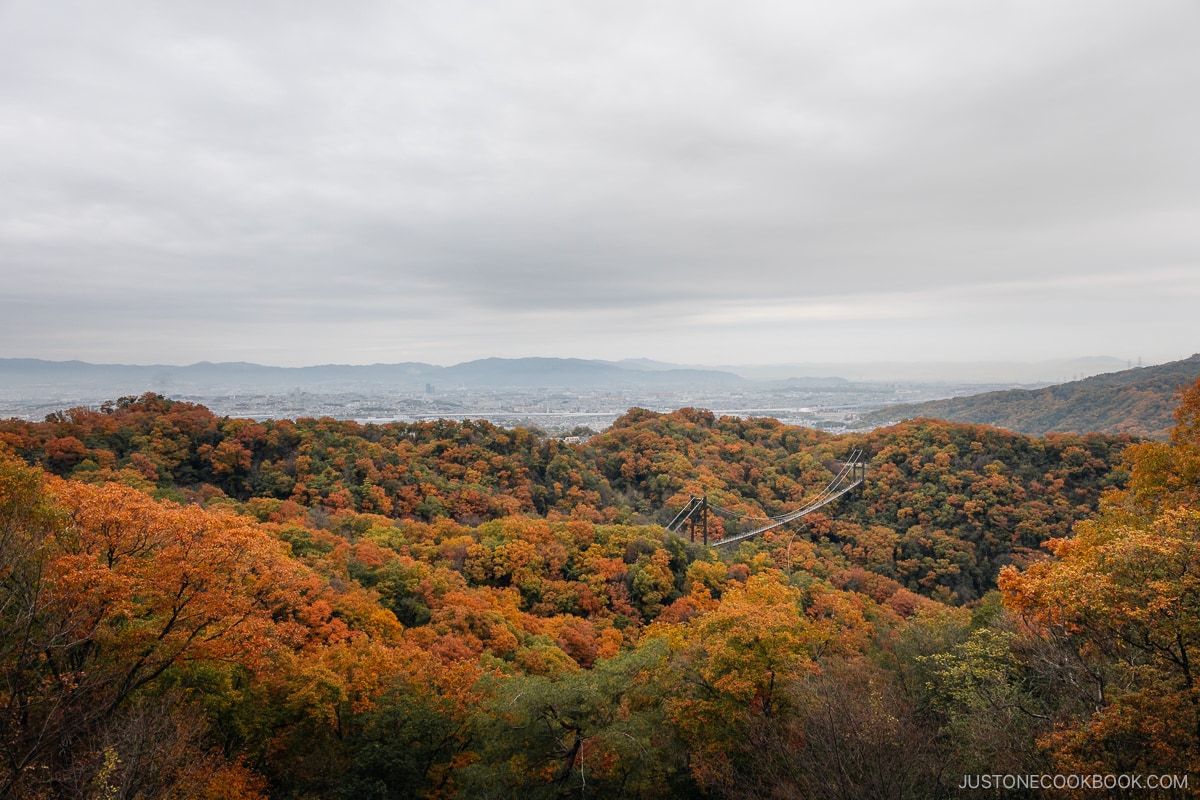
This post marks the final and bonus episode of my autumn series through Kyotowhere I share tips and some of the best places for enjoying autumn leaves (紅葉, kōyō) in the area. Planning a visit to Kyoto during the fall? Don’t miss the links above.
Now, let us travel to Osaka to witness its magnificent fall colors!
How to Get to Osaka from Kyoto
After returning from Ujithe following day, I took the Special Rapid Tokaido-Sanyo Line from Kyoto Station to Osaka Station, which took approximately 30 minutes and cost 580 yen one-way.
If you plan to go to Osaka by plane, the closest airport is Kansai Airport. Board the train from Kansai Station on the Kansaikuko Line Kanku-Rapid towards Kyobashi to Osaka Station (or your desired stop). The journey will take approximately one hour and 20 minutes, costing 1,210 yen one-way.
When to Visit Osaka in Autumn
Like Kyoto, you can see the autumn foliage from mid-November to early December. I visited on the 27th and 28th of November, 2023, and the autumn colors were at their peak. Timings vary from place to place, but overall, I recommend traveling to Osaka in late November.
However, as the weather changes yearly, I highly recommend researching autumn forecasts online before planning your trip.
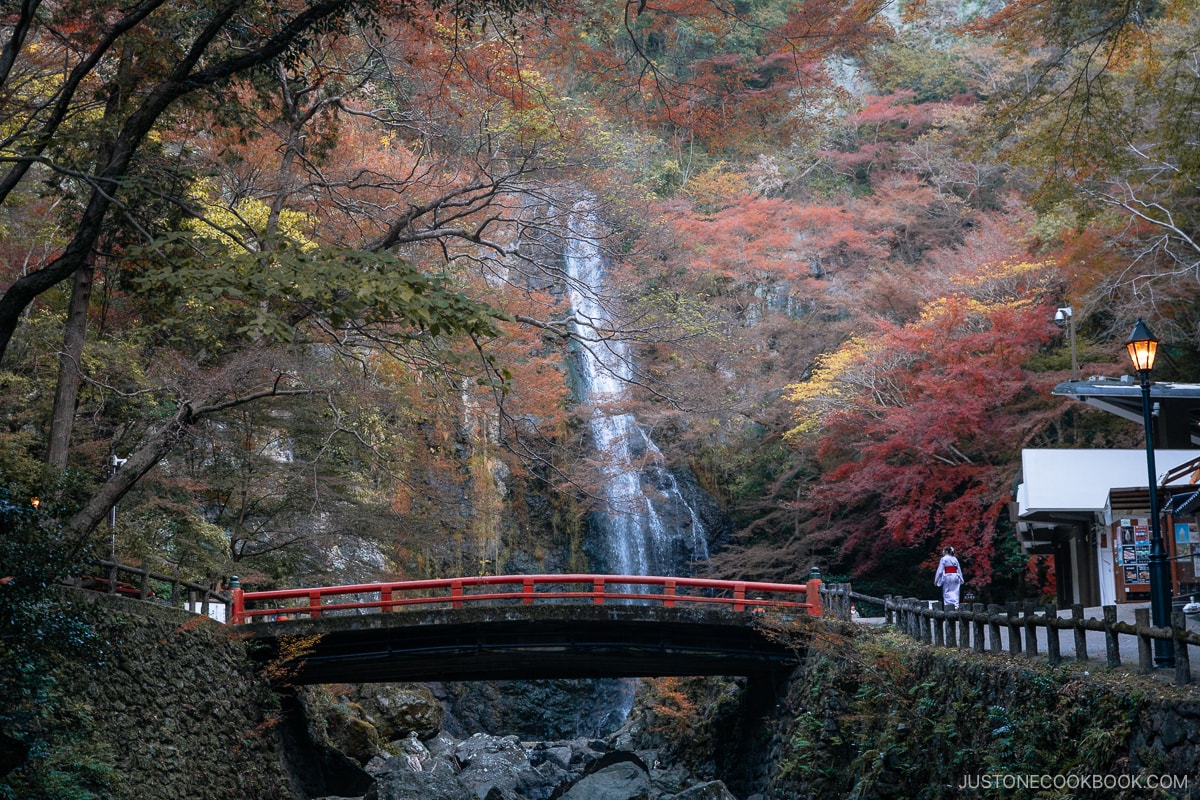
Minoh Park
Minoh Park (箕面公園) is a forest valley located in the northern suburbs of Osaka and is one of the most popular autumn destinations in the Kansai region. To get to Minoh Park (aka Minoo Park), take the express train on the Takarazuka Line from Hankyu Osaka-Umeda Station to Ishibashi Handai-mae Station. Then, change lines to the Hankyu Minoo Line bound for Minoo Station. The whole trip takes approximately 30 minutes and costs 280 yen one way.
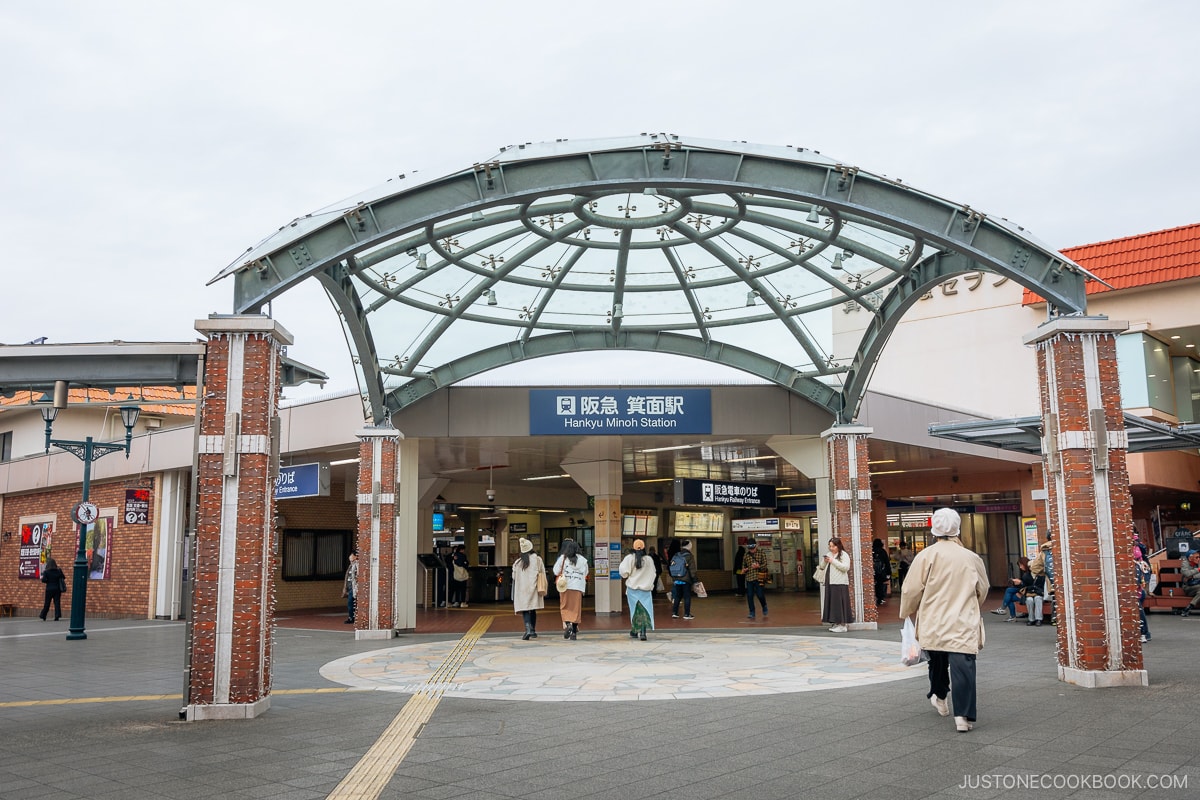
Located next to Minoo Station is an information center where you can pick up a leaflet (available in English) explaining all about Minoh Park, the trail path, and local restaurants. From the station, signs will guide you to the park entrance – a 2.8km (1.7 mi) walk through a valley alongside Minoo River.
Along the way, small vendors sell local sweets and treats, such as roasted chestnuts.
I decided to pick up some momiji (maple leaf) tempura, which you can find throughout the walk. Vendors deep fry the momiji leaves till crispy with sweetness from the batter, making it the perfect snack while enjoying the autumnal walk.
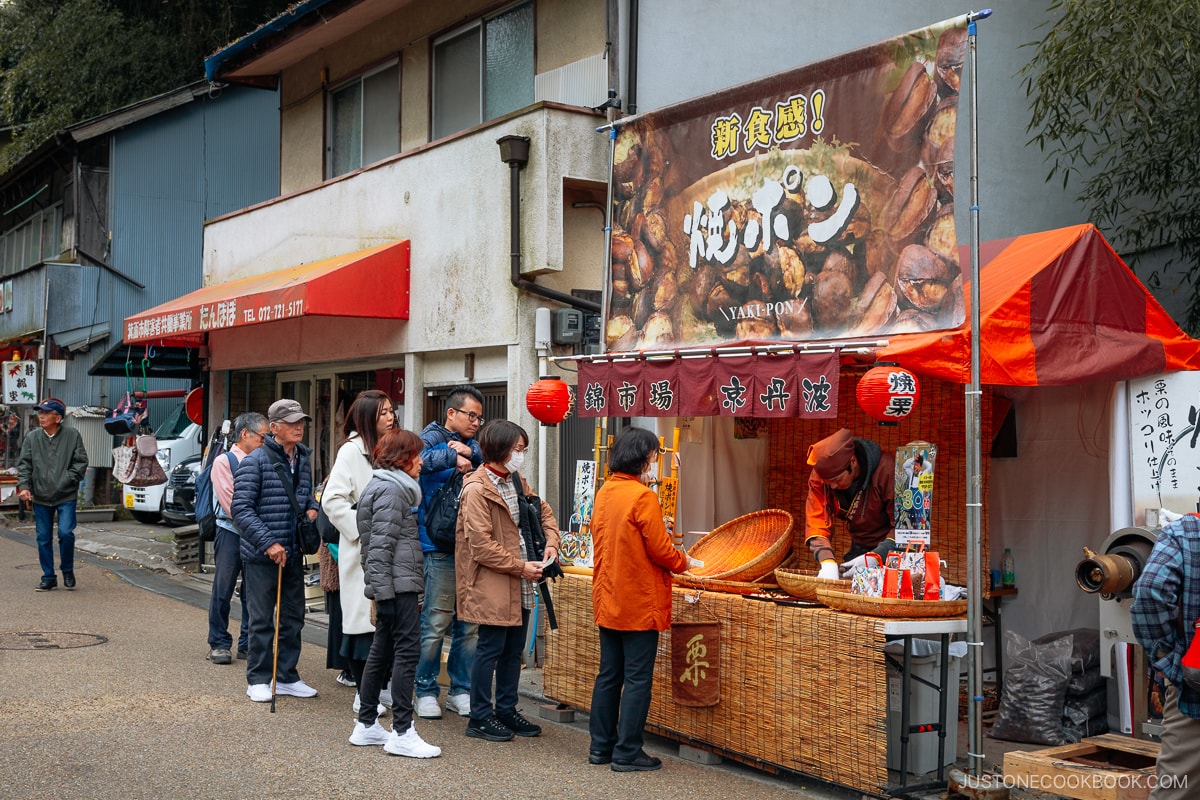
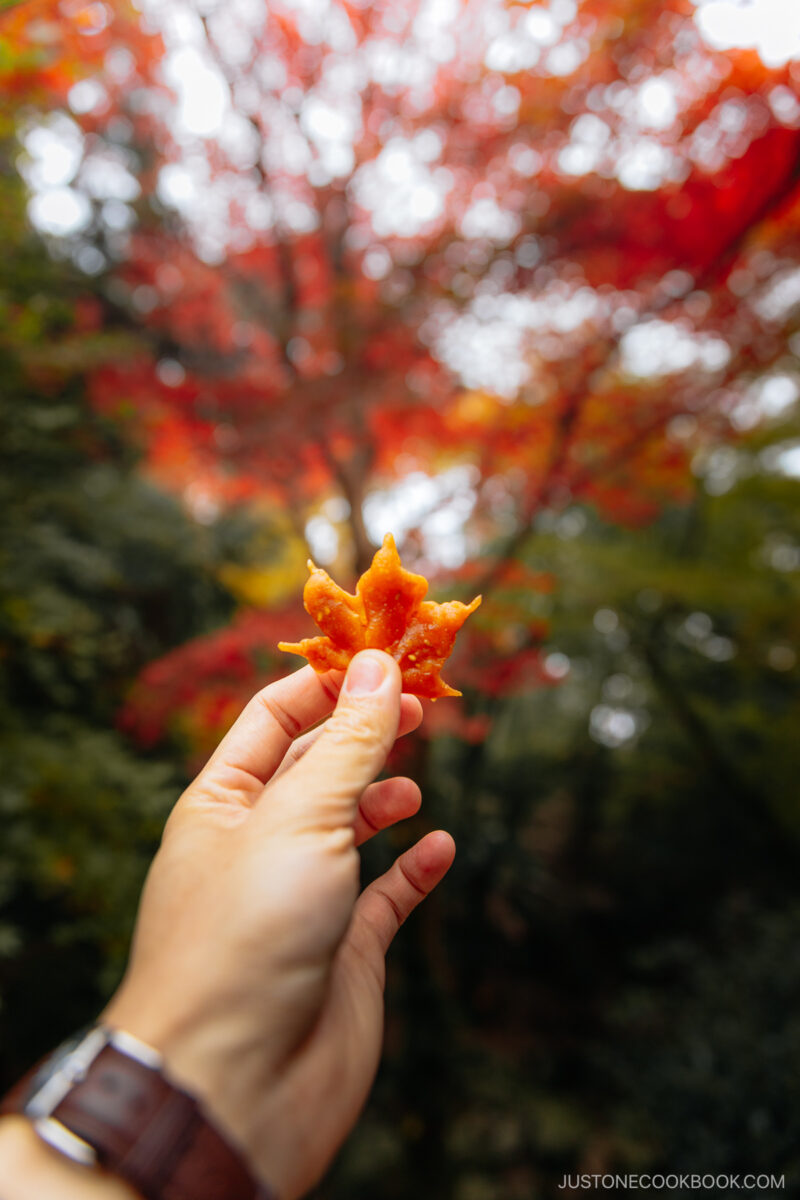
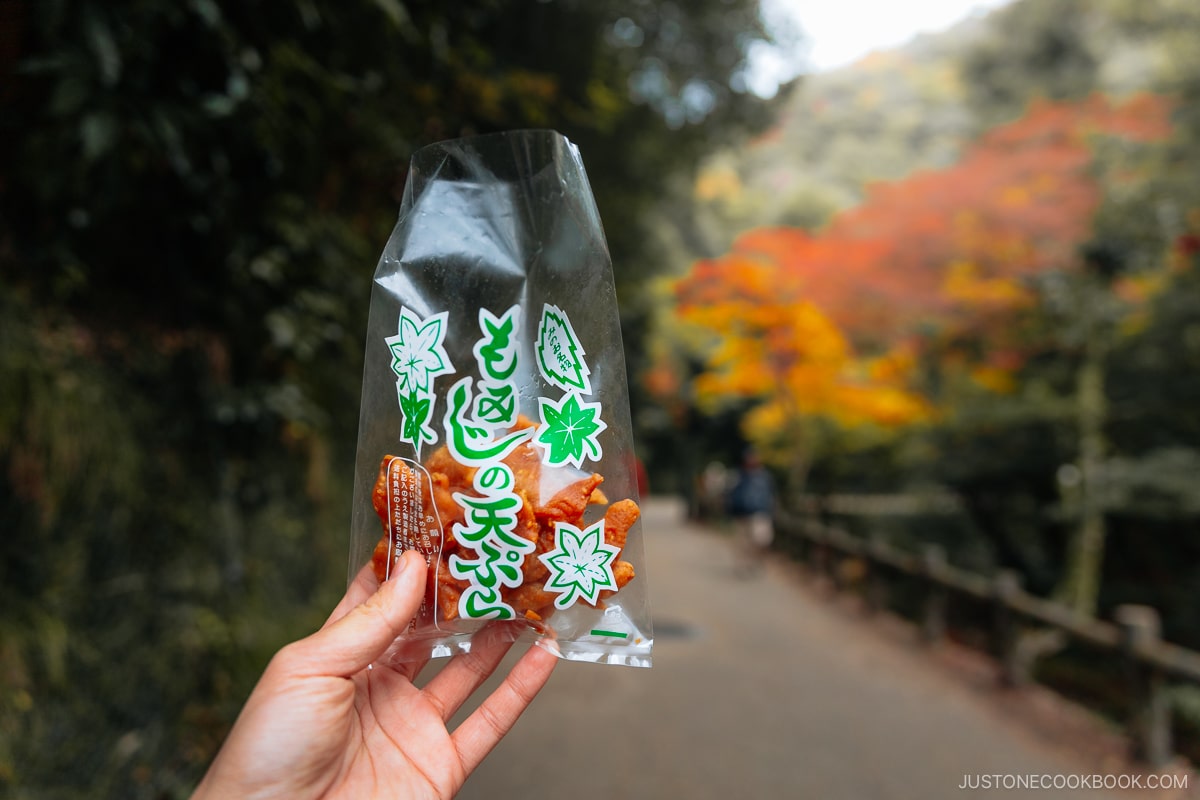
Walking Through Minoh Park
The first half of the walk passes by various shops, cafes, and even ryokans (traditional Japanese inns) with a gentle incline.
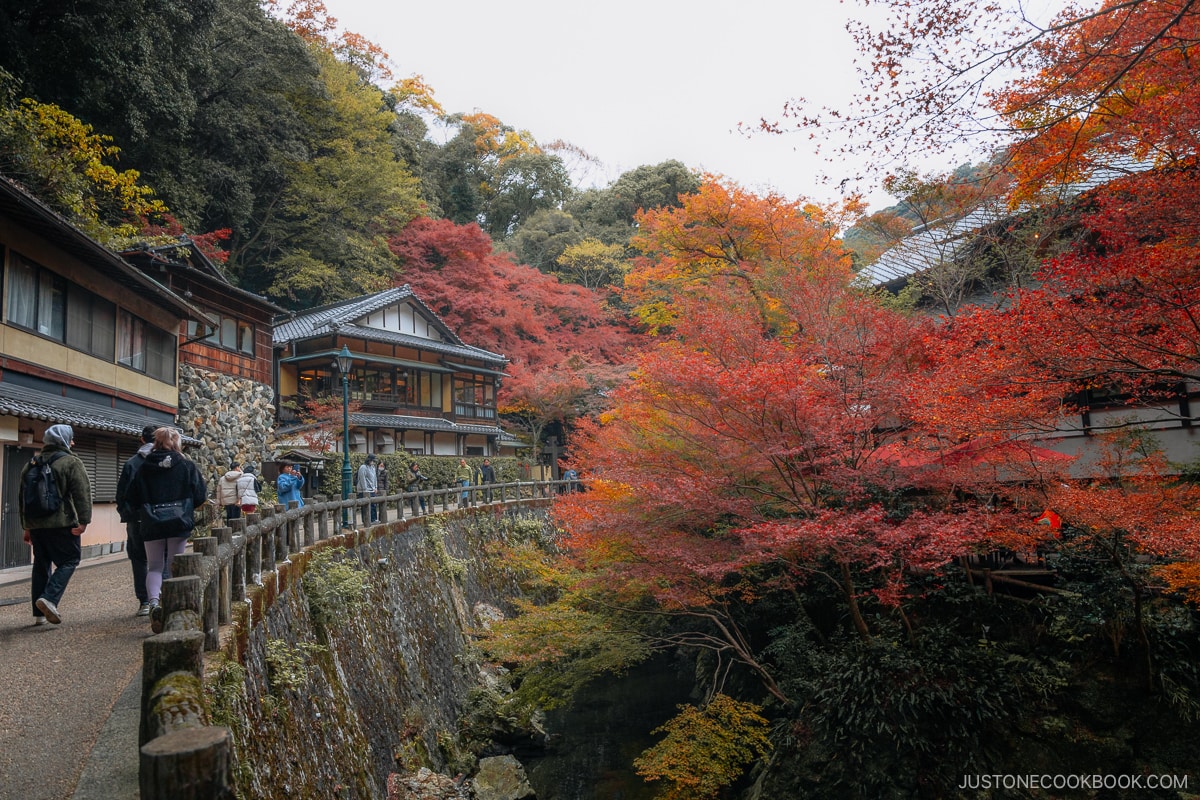
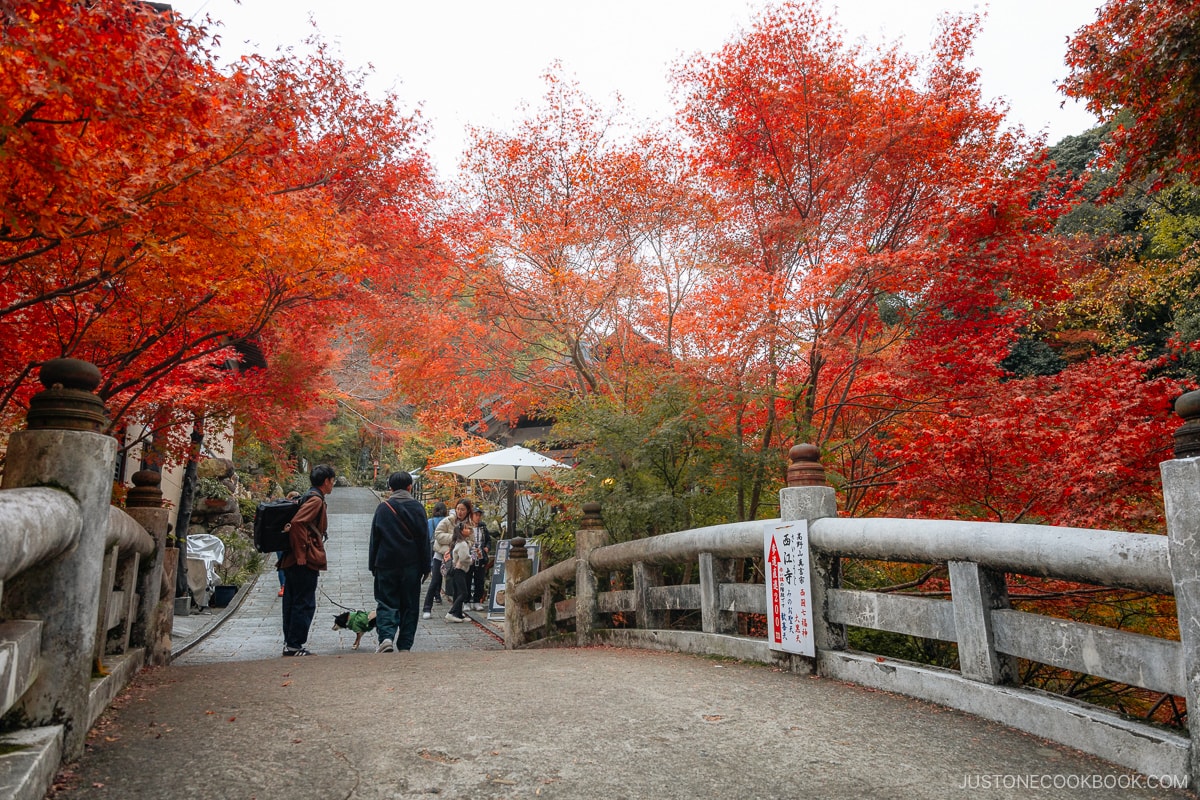
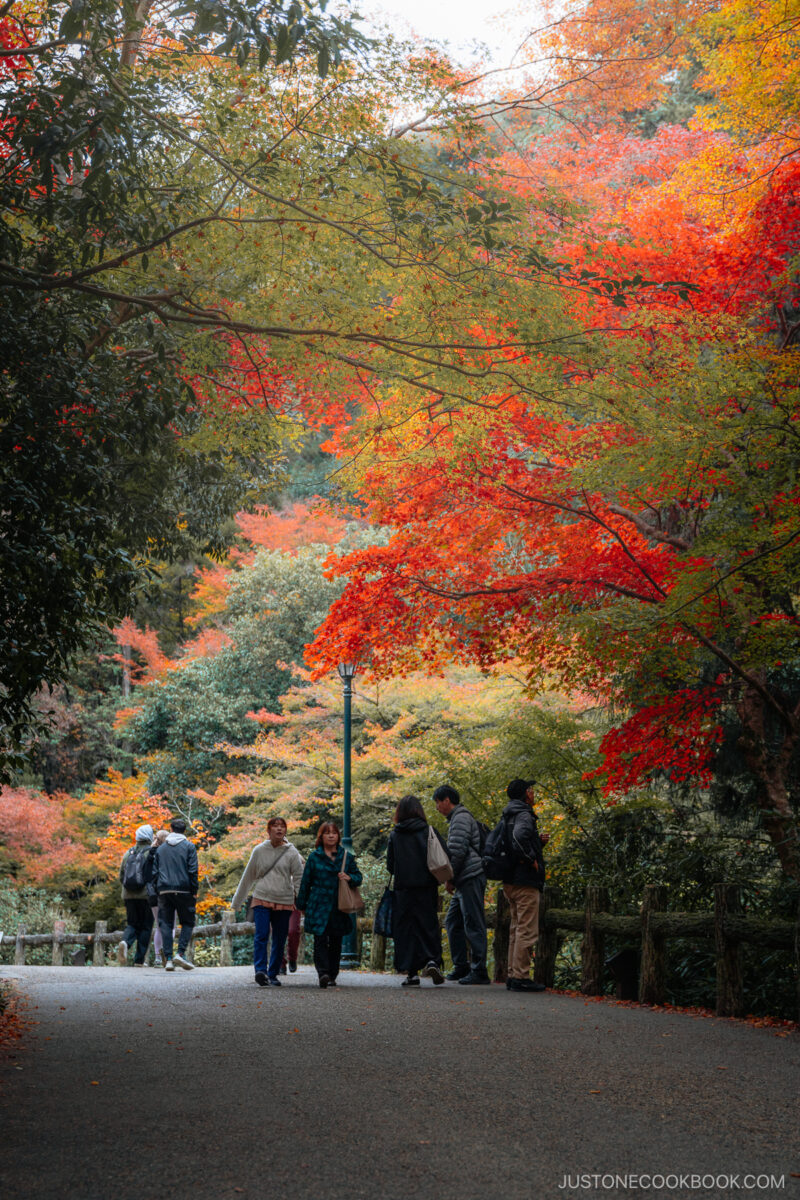
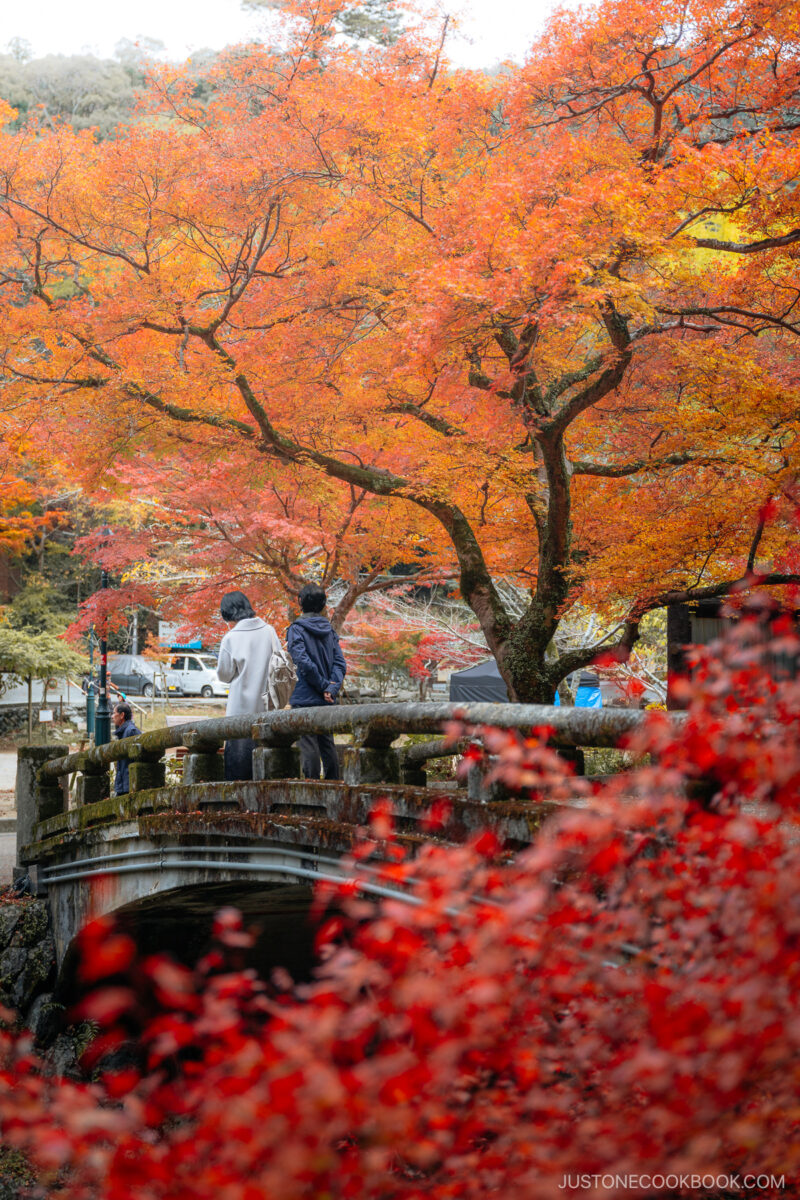
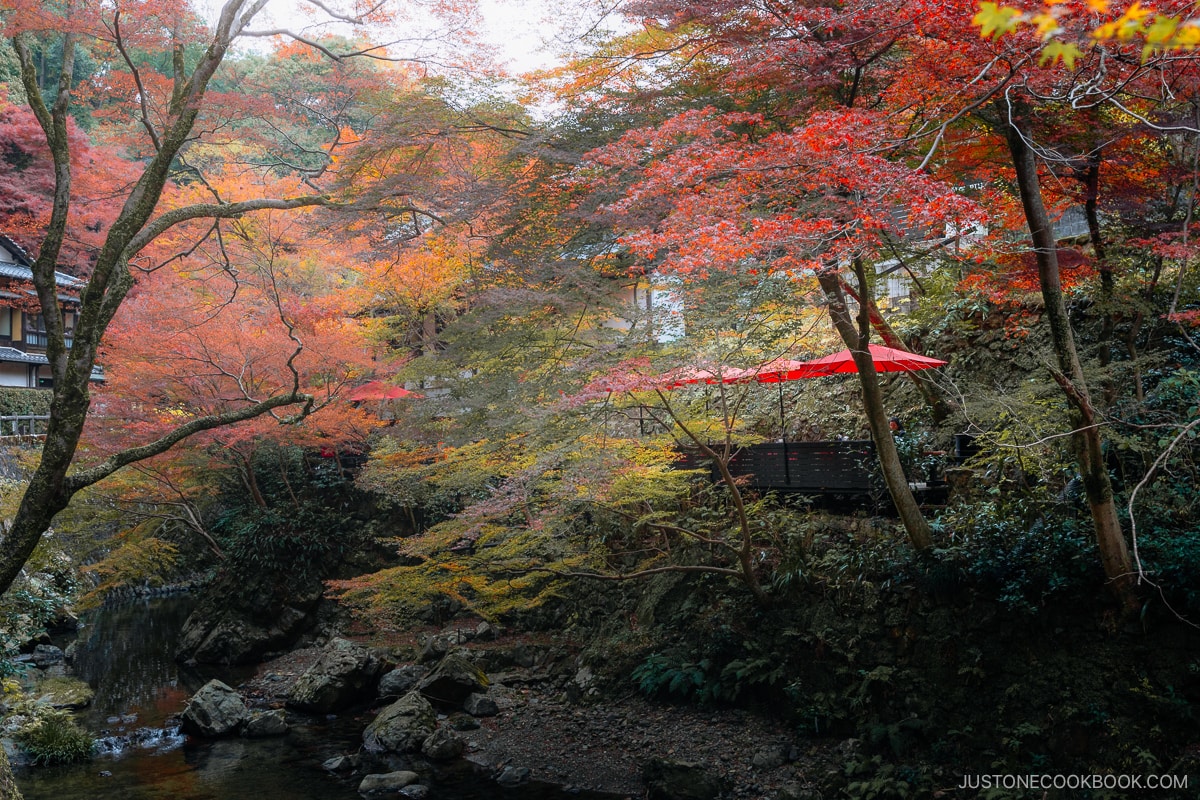
One notable monument is Ryuan-ji Temple (瀧安寺), which is part of the Shugen-do mountain-worship religious sect.
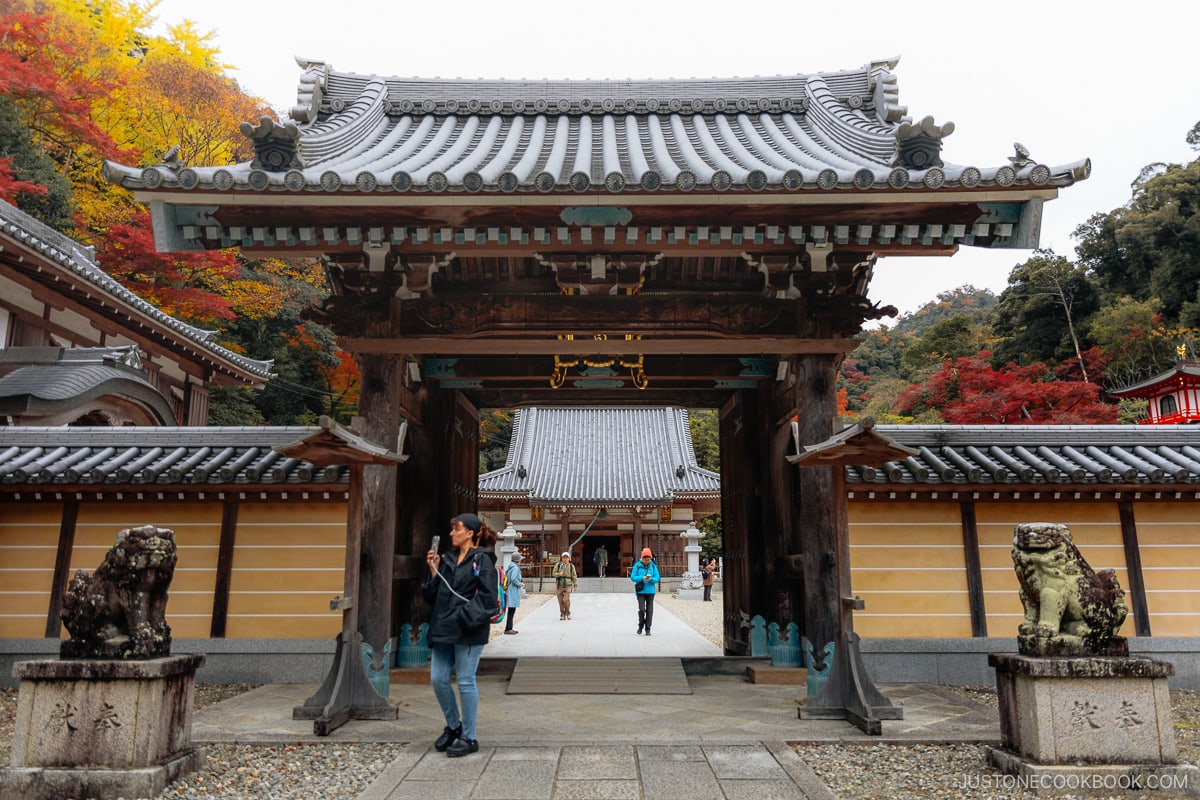
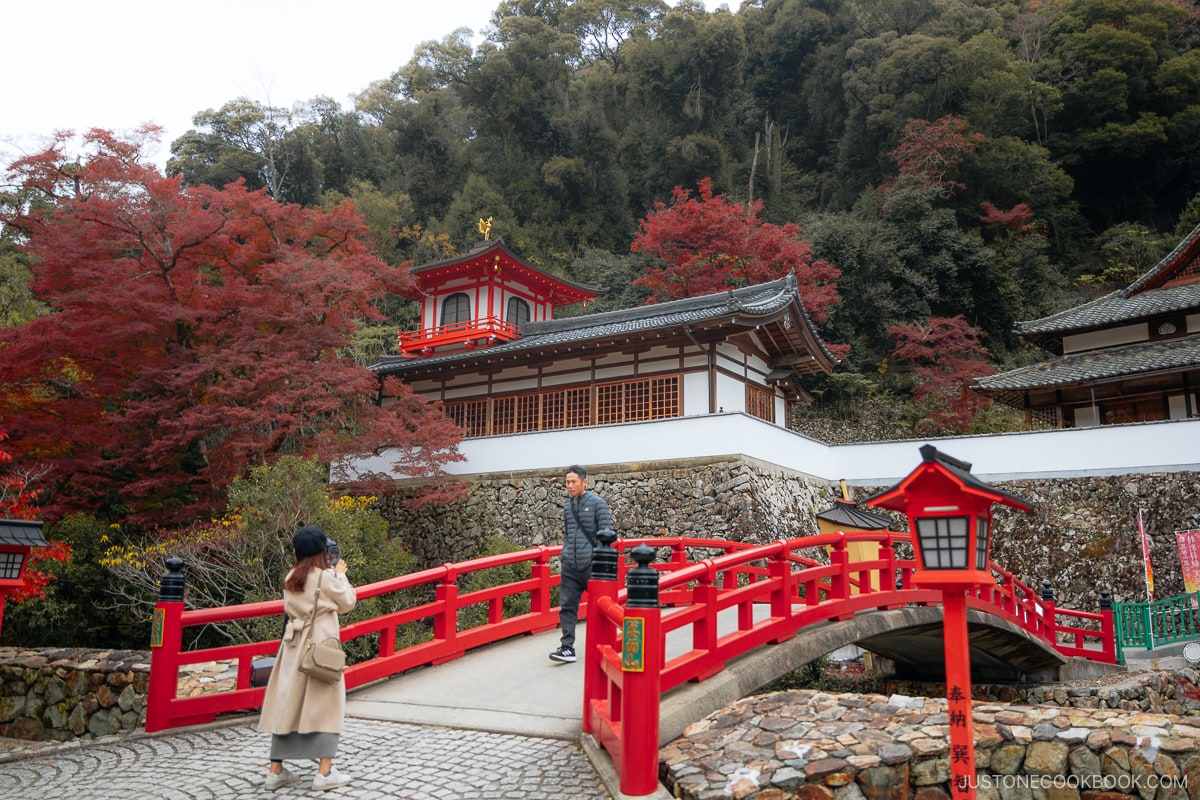
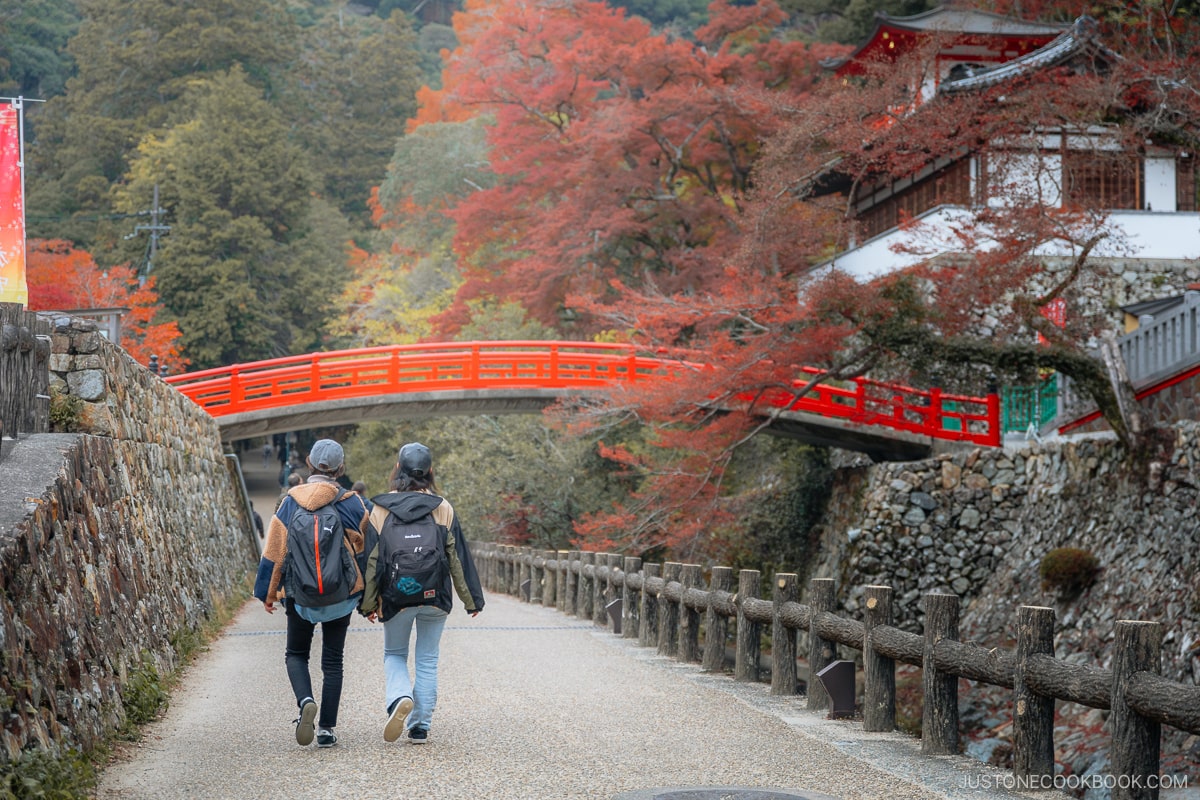
The second half varies in topography, with steeper inclines that delve deeper into the park’s nature.
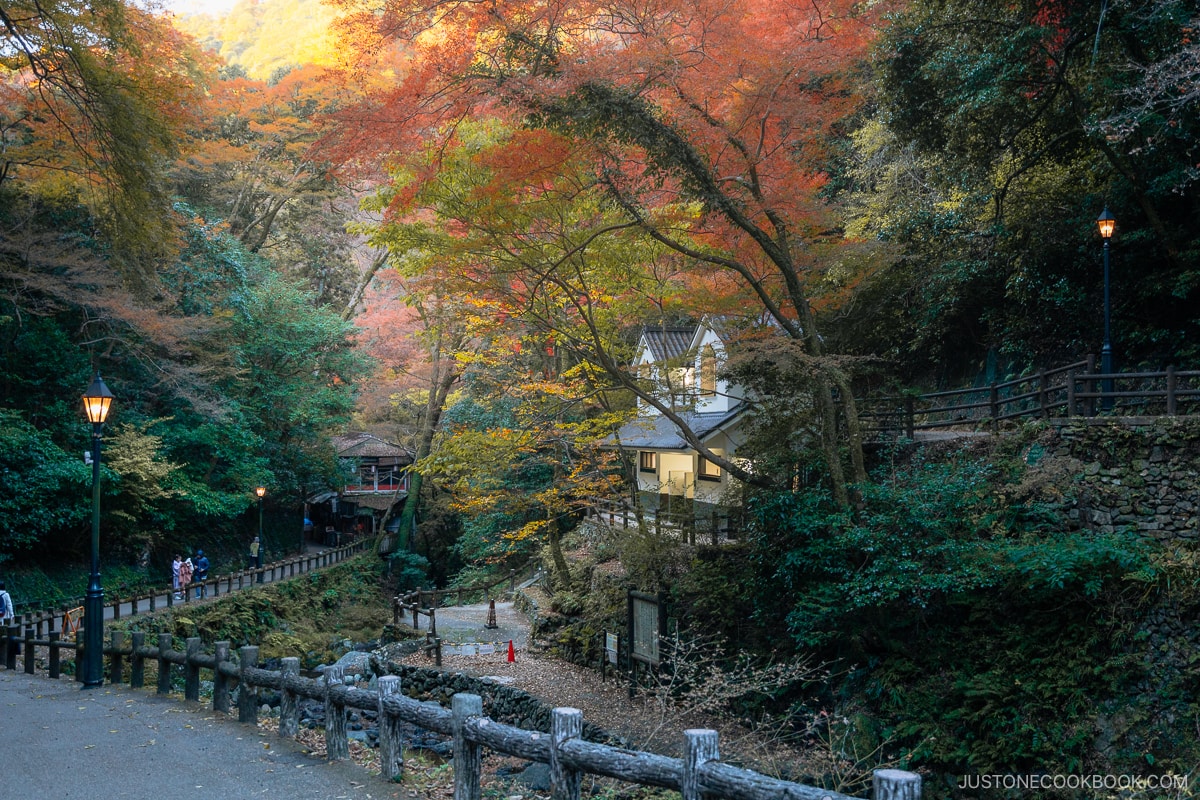
The walk culminates with Minoo Waterfall (箕面大滝), the only one of Japan’s ‘100 Great Waterfalls’ in Osaka, standing at 33 meters in height.
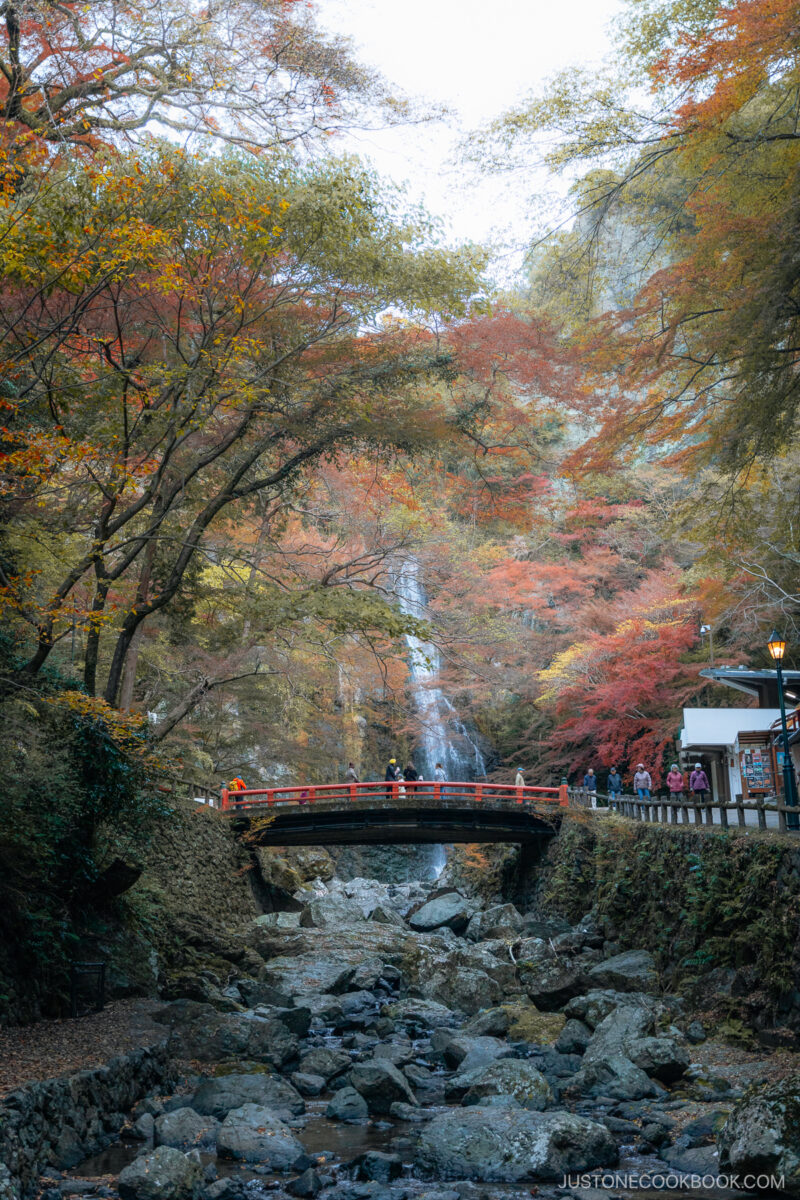
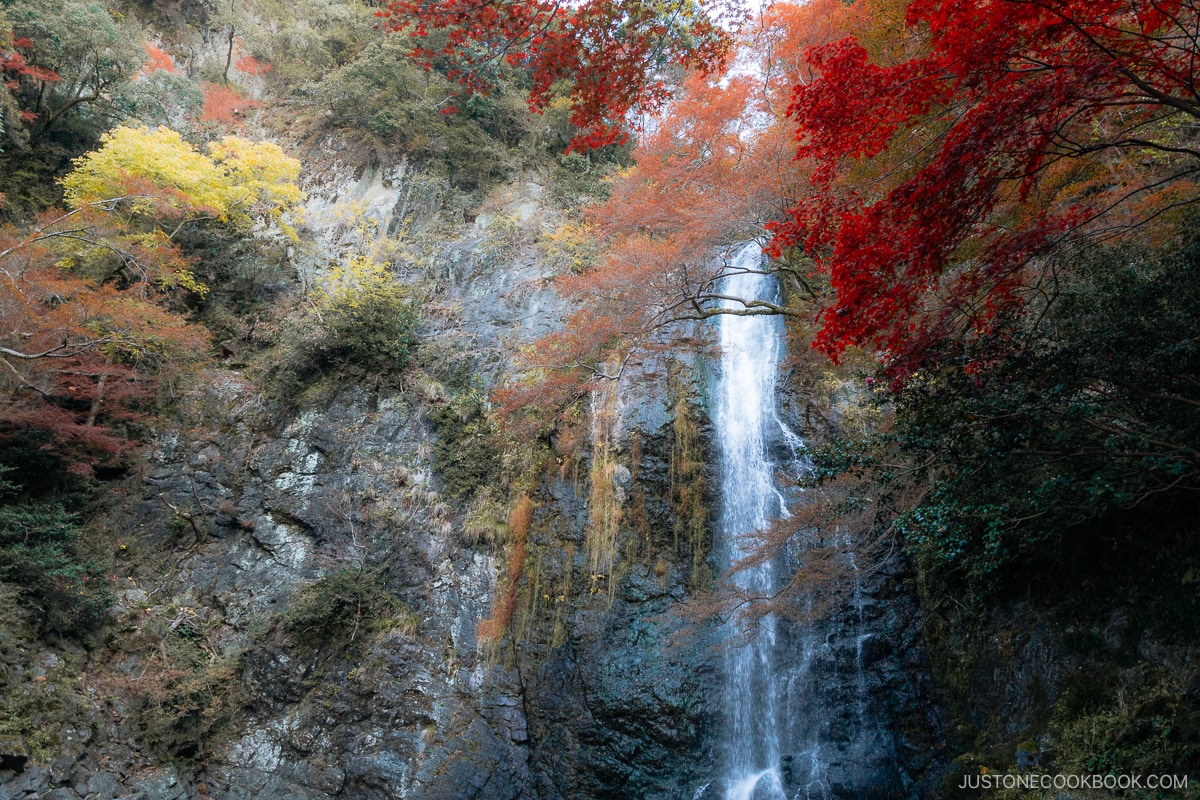

I visited early in the morning, so there were very few people, but I’ve heard that it gets very busy during the afternoon. While it was beautiful, especially with the fiery autumn colors, I found that I preferred the walk leading up to the waterfall. The park is worth a visit, especially for the scenery (and those Momiji tempura snacks).
Katsuo-ji Temple
Located a little deeper into the mountains from Minoo Waterfall is Katsuo-ji Temple (勝尾寺), which is somewhat challenging to access. You can take a taxi from Minoo Station, which will take approximately 20 minutes. Alternatively, you can board the Minoo Takimichi One-way Sightseeing Tour Bus from Minoo Station, which will take you directly to Katsuo-ji. Their website has a bus schedule, but it is only available in Japanese.
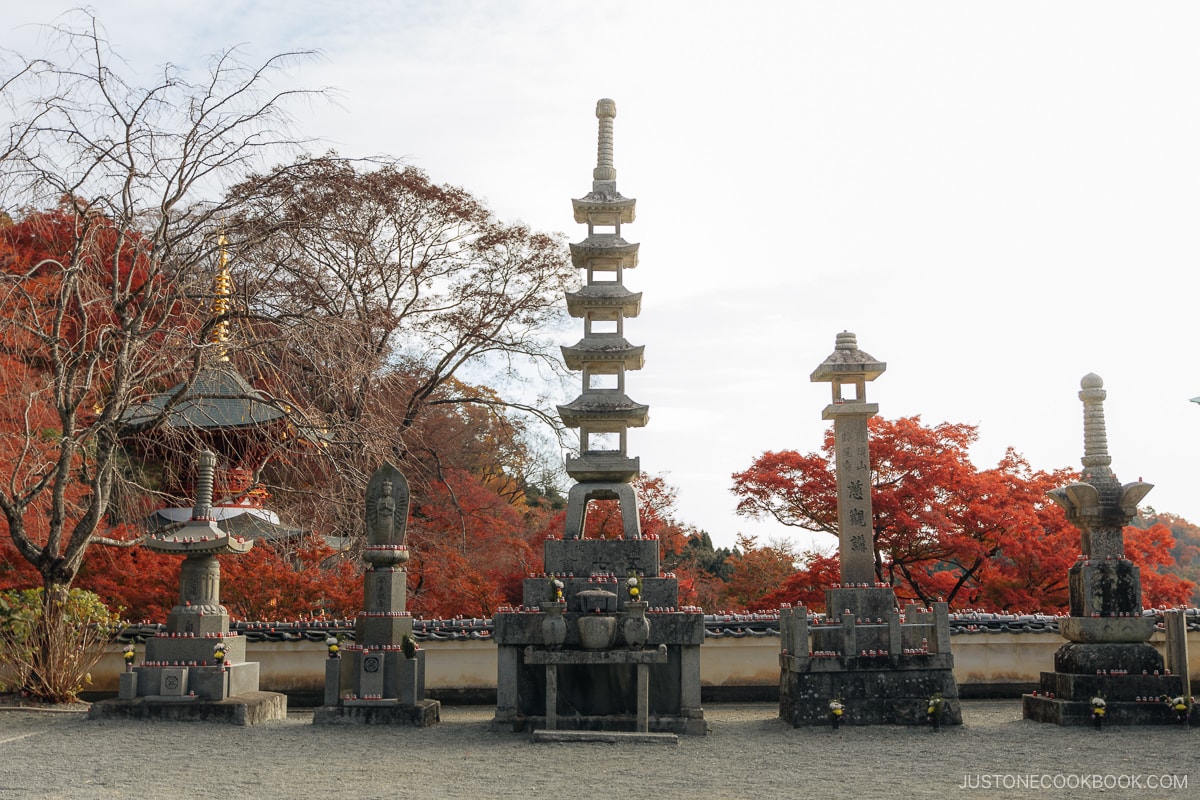
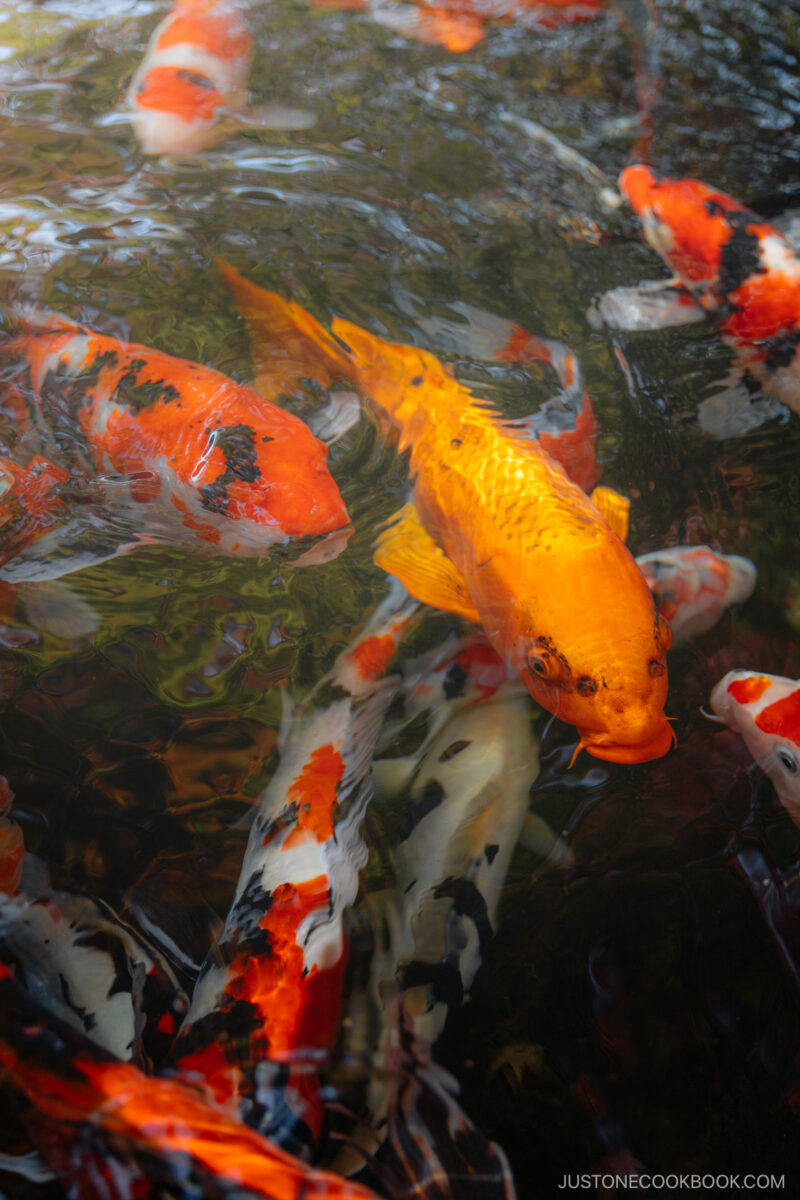
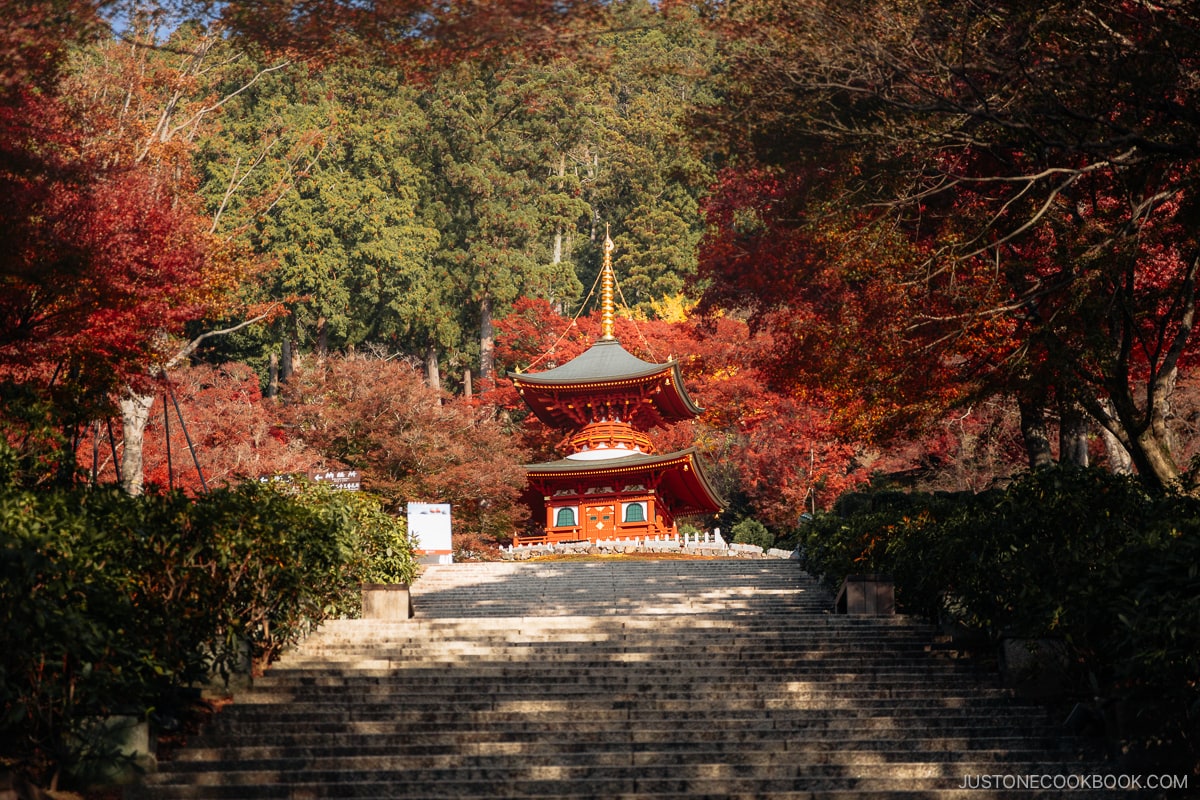
History of Katsuo-ji
Katsuo-ji, initially known as Miroku-ji Temple, had its humble beginnings as a small hut built in 765. Decades later, Emperor Seiwa (850 – 881) visited the temple while grappling with a life-threatening illness. Thanks to the monk’s prayers, Seiwa recovered and renamed the temple Katsuo-ji, directly translating to ‘the temple that triumphs over the emperor.’ Nowadays, people visit the temple to pray for luck in work, studies, business, and various other endeavors.
There is a 400 yen entrance fee to the temple. Upon entering, you will immediately enjoy a panoramic view of the temple grounds.
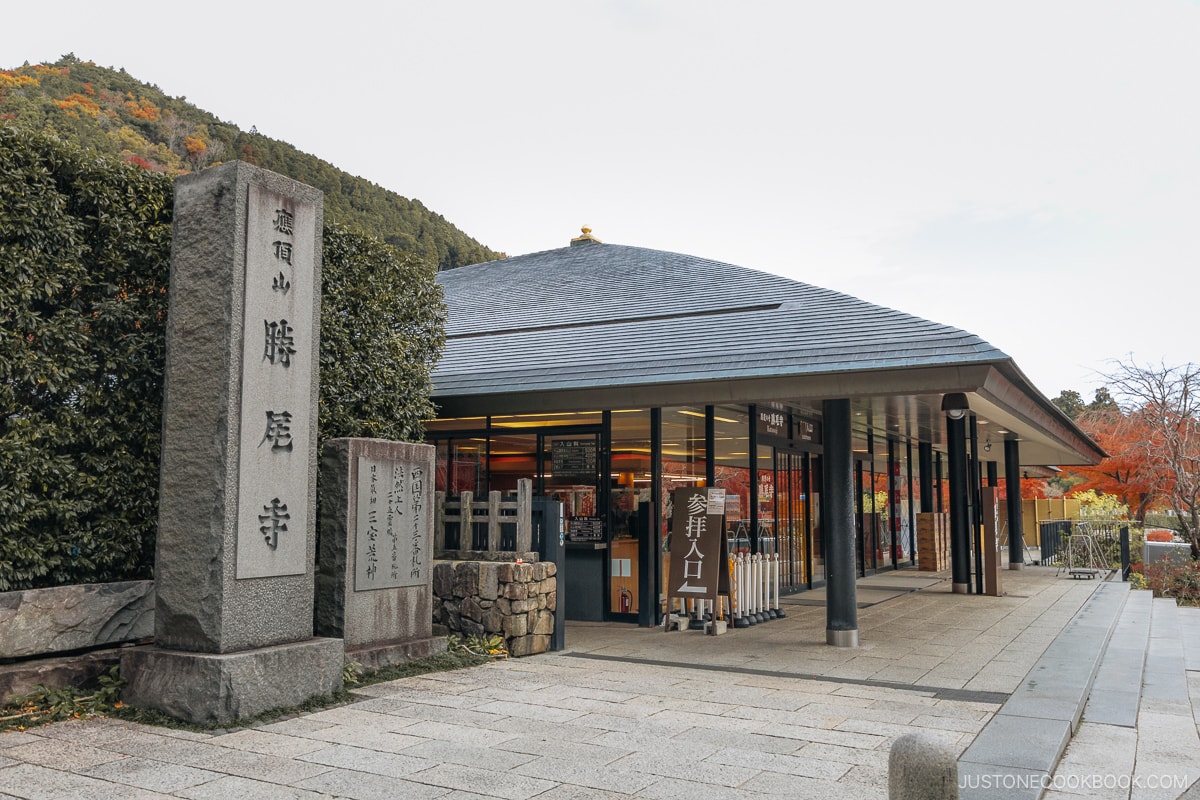
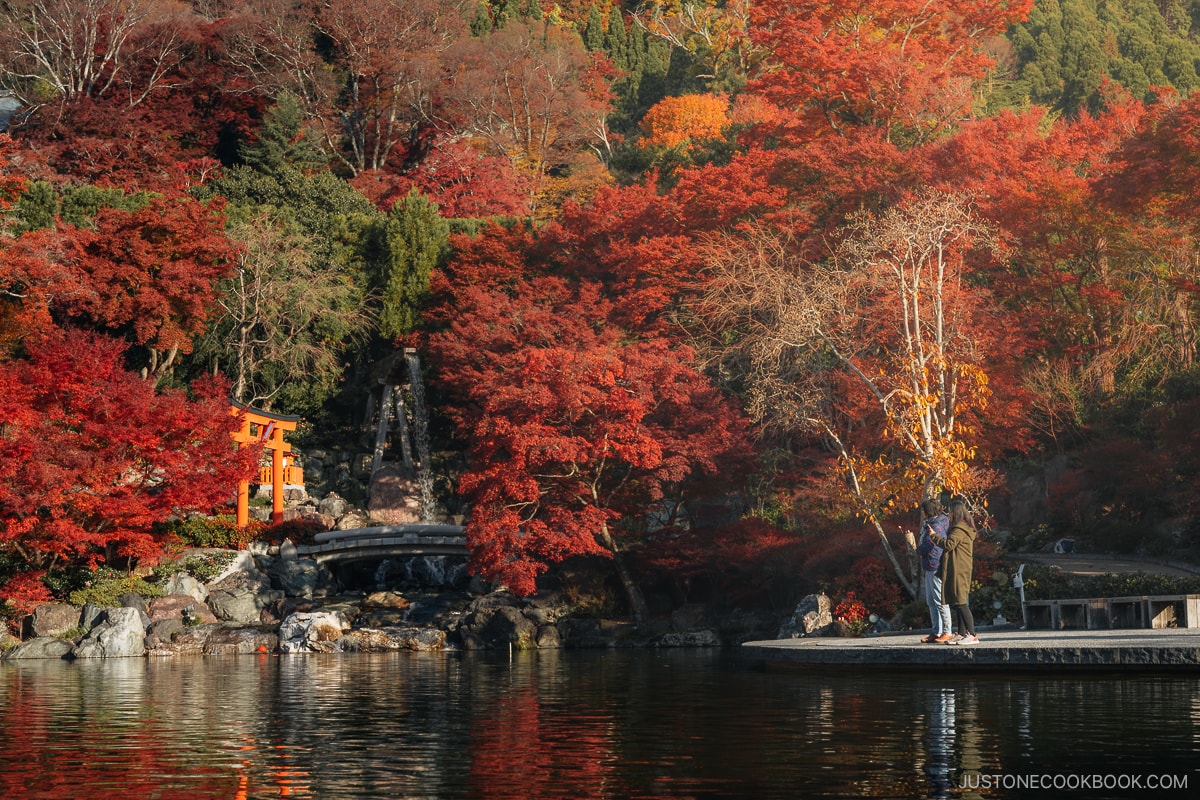
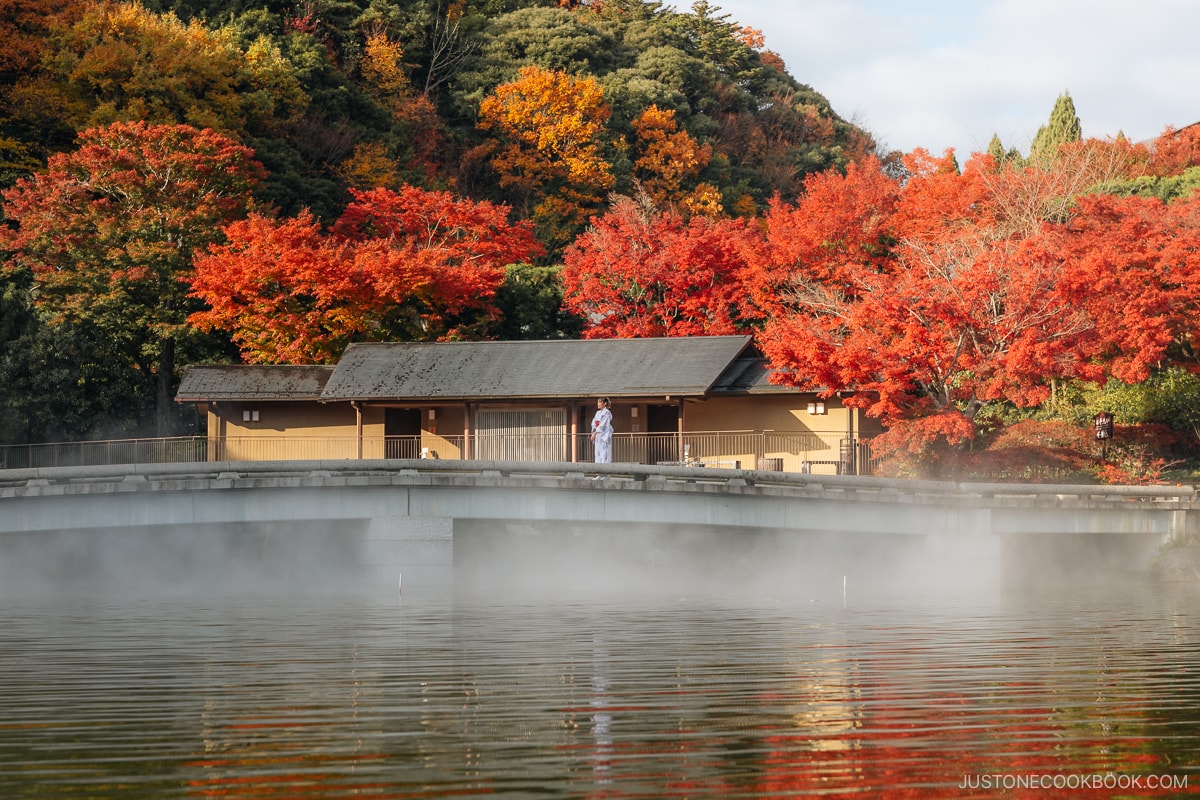
Throughout the temple, miniature Daruma dolls are scattered on the ground, in shrines, and on walls. These dolls were modeled after the founder of Zen Buddhism, who is said to have sat in meditation for so long that his legs fell off, hence the rounded shape. The Daruma dolls in the temple are known as kachi-Daruma, or winning Daruma.
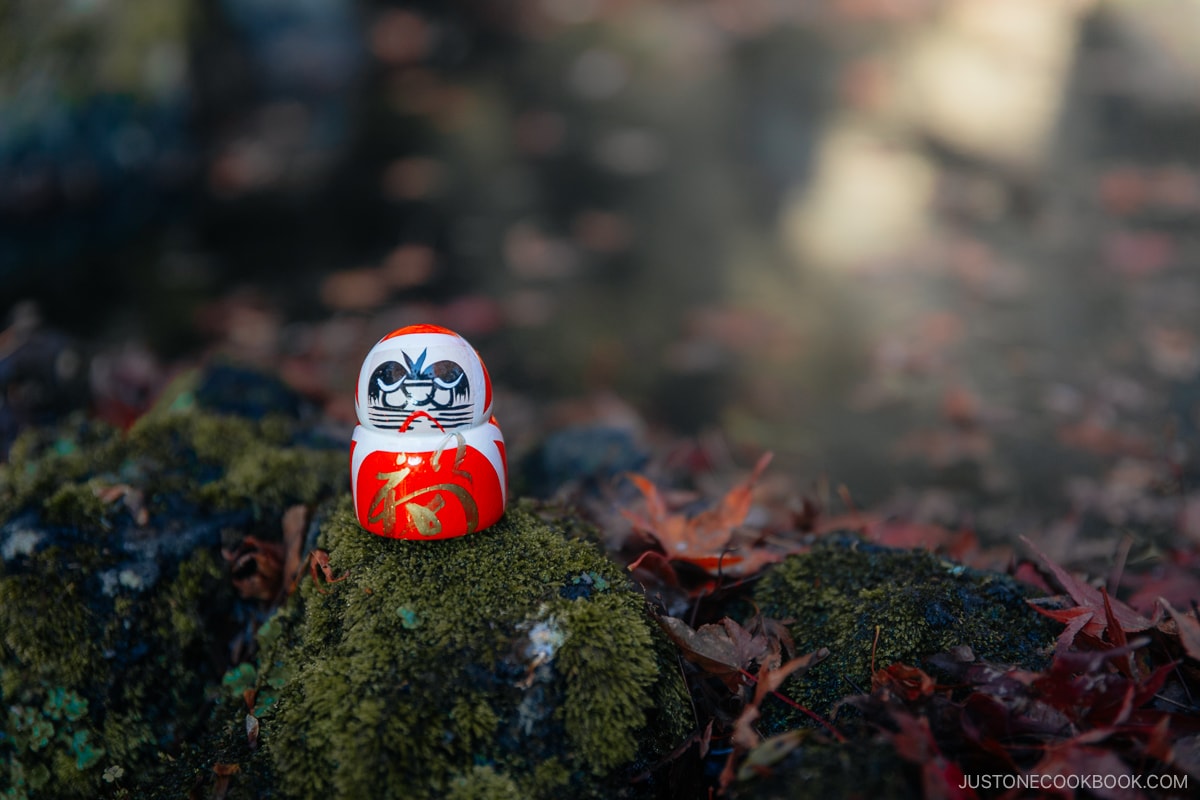
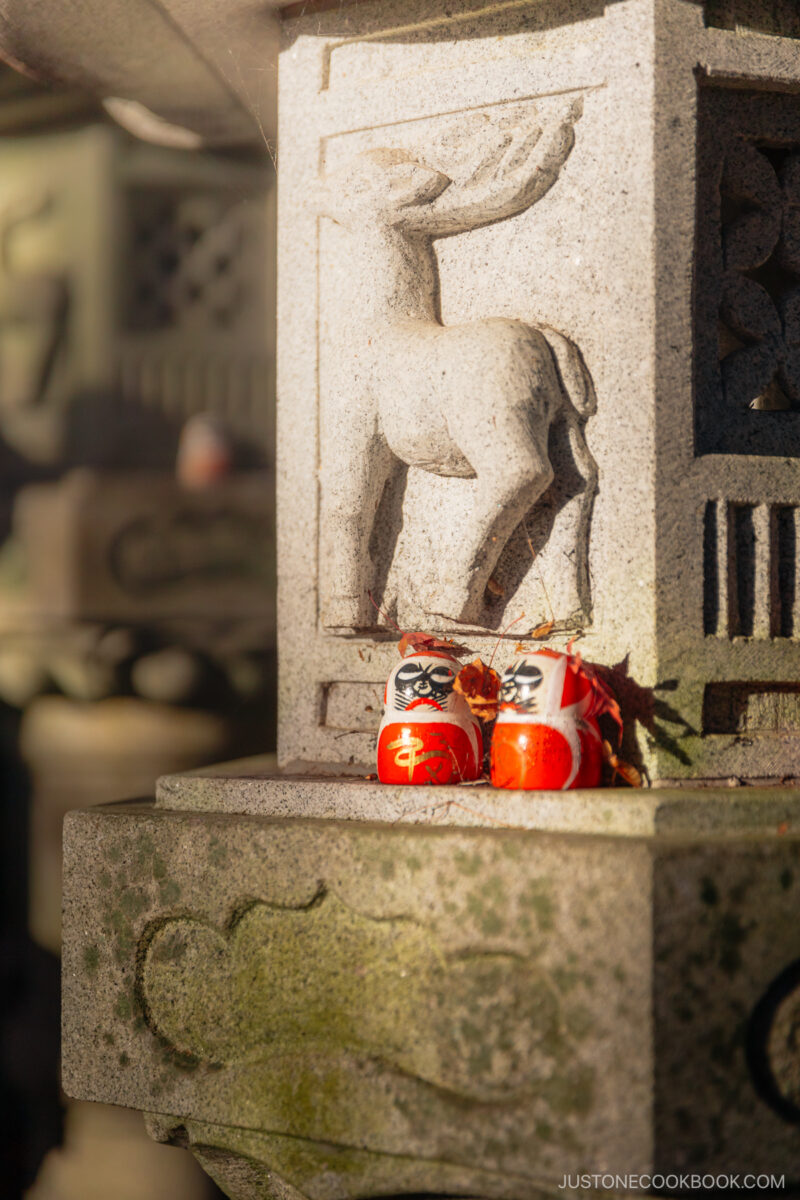
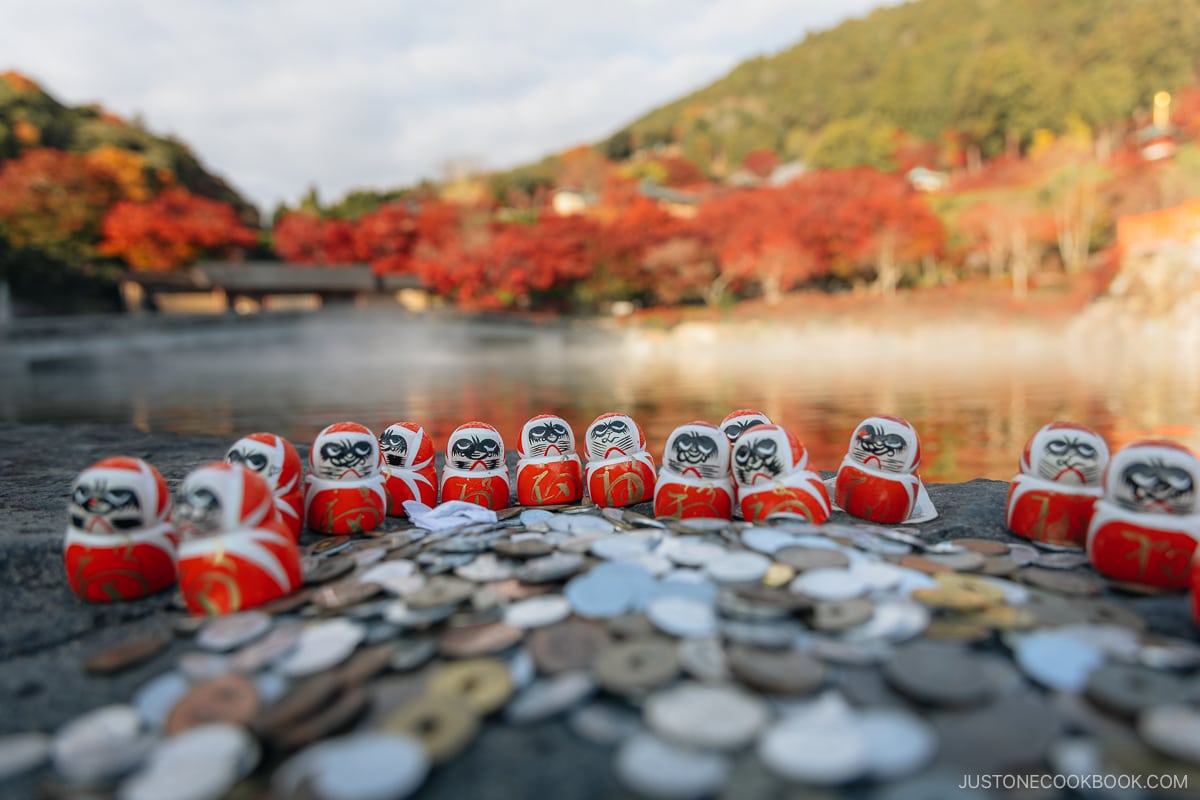
I was lucky to visit Katsuo-ji in peak autumn, so the grounds were covered in a sea of fiery red maple trees.
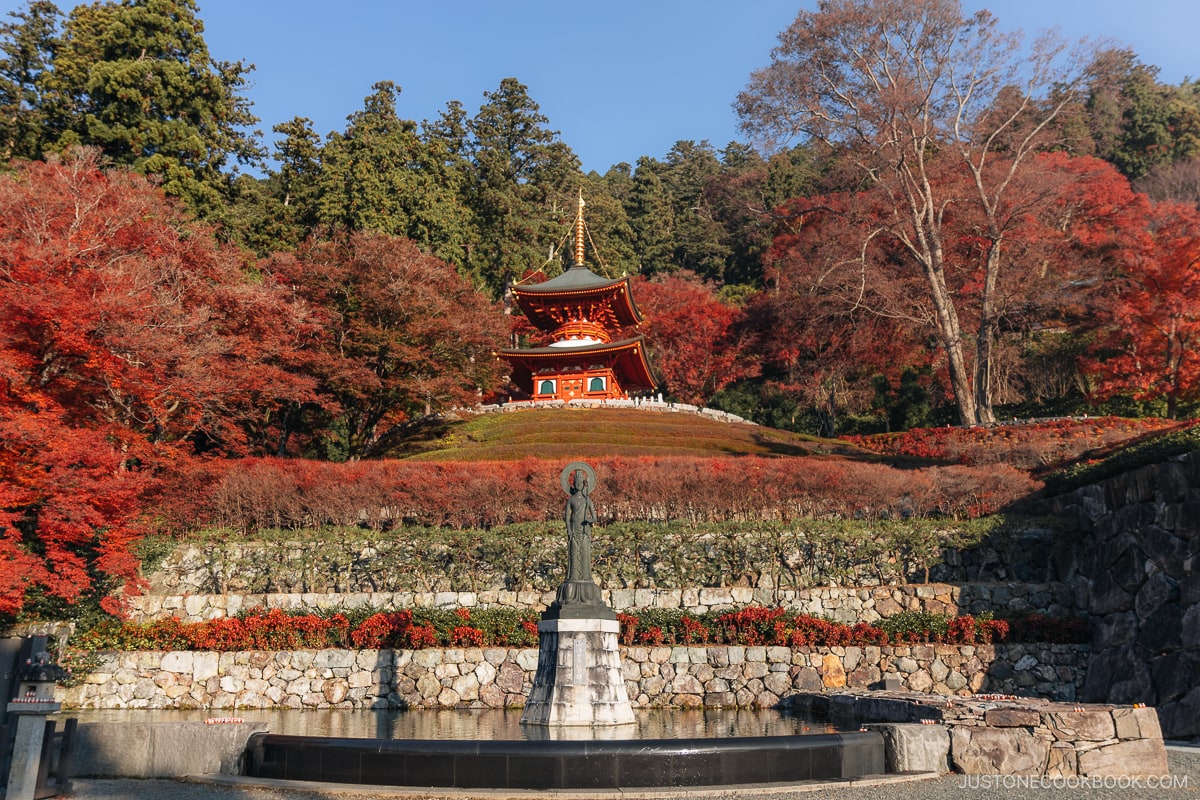
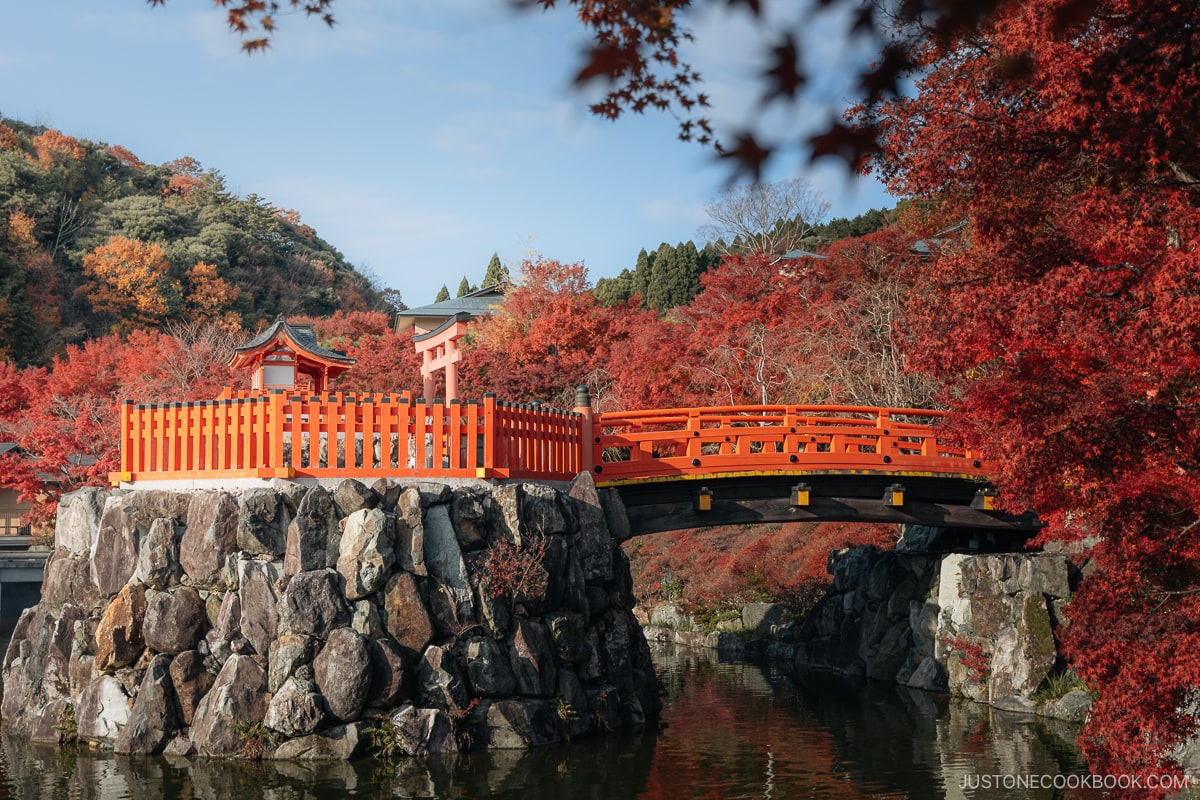
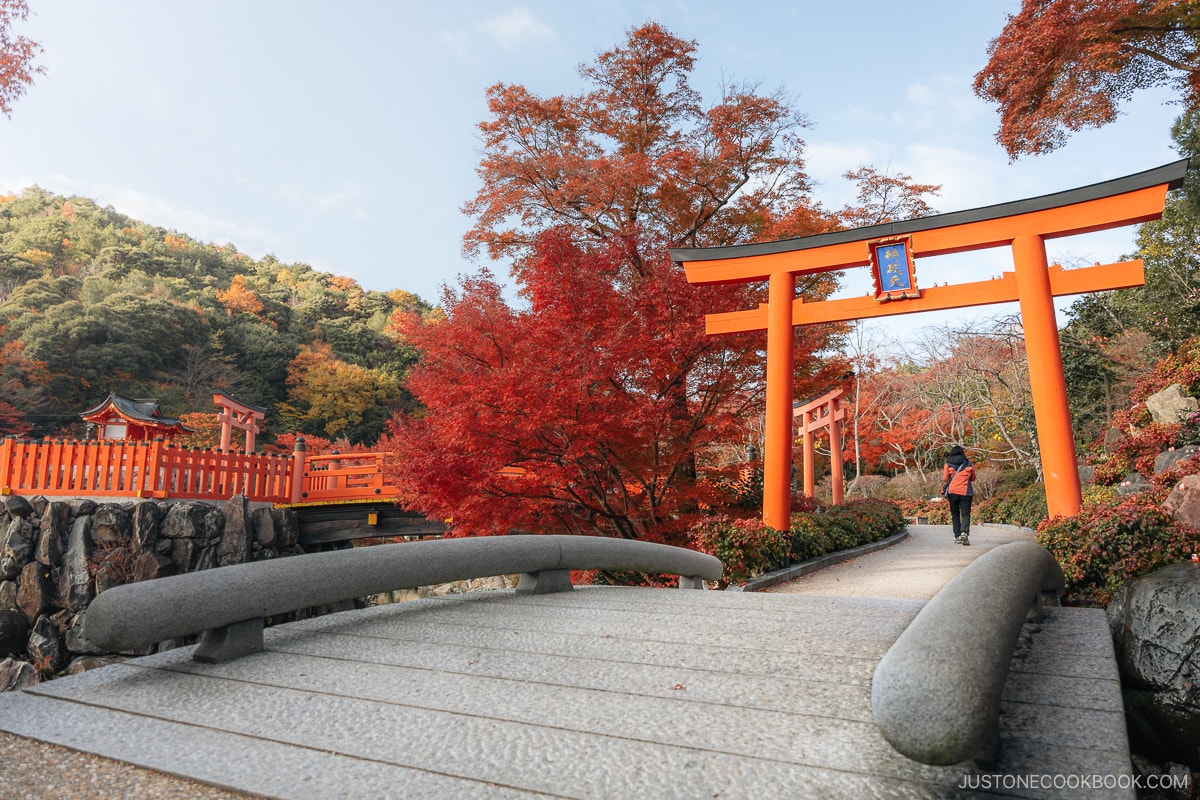
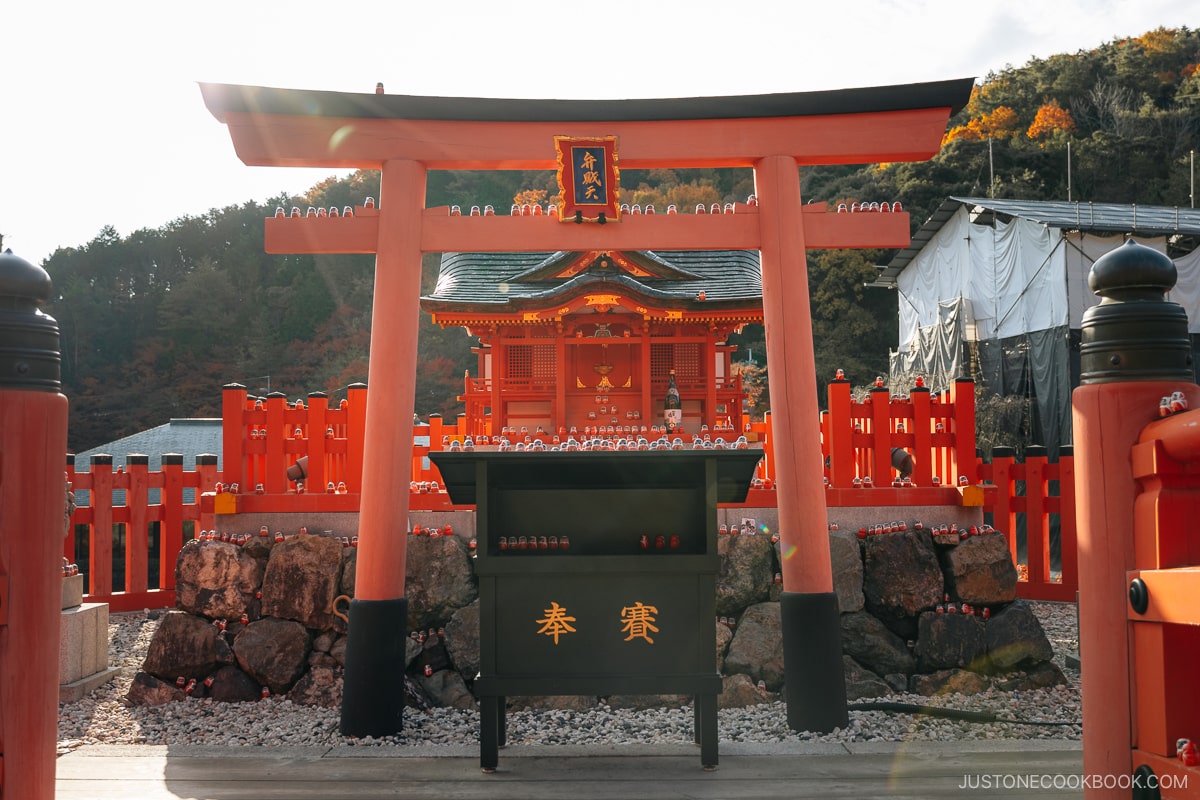
A collection of Daruma dolls in all sizes lines the path leading to the top of the grounds. This pathway takes you to the main hall and a small shop where you can pick up your own Daruma!
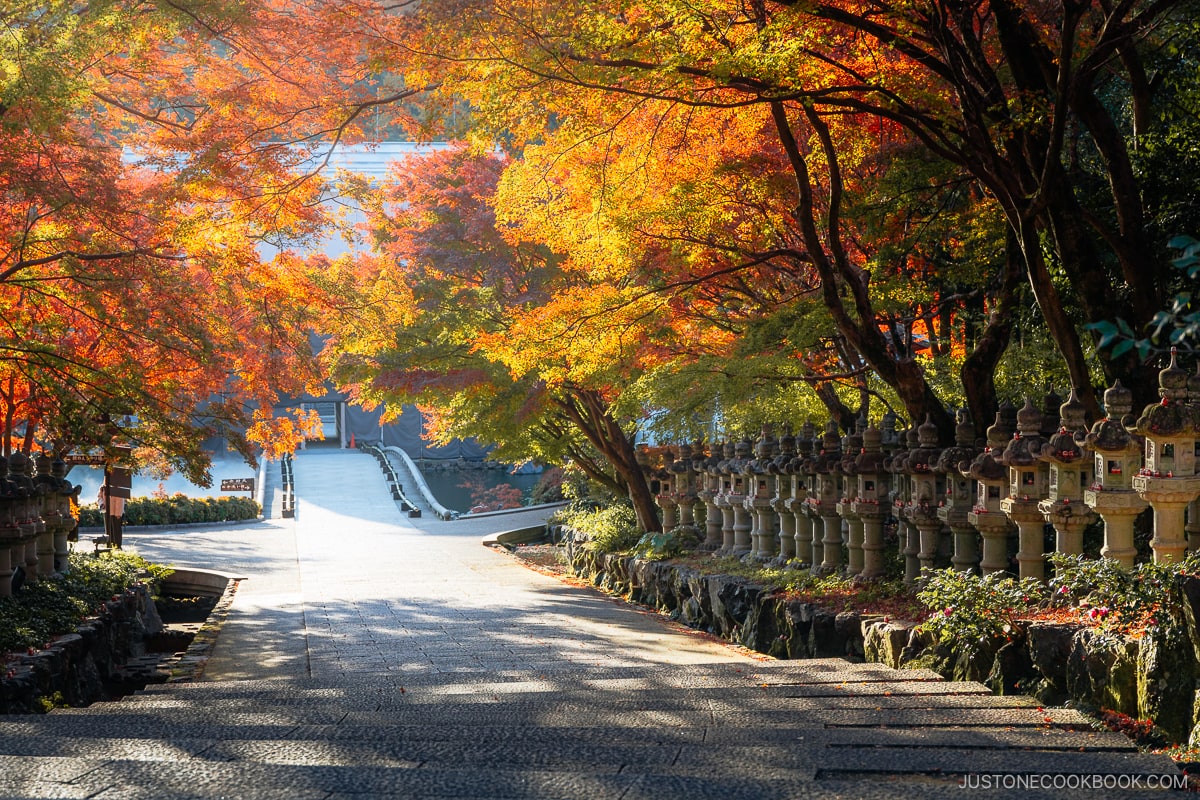
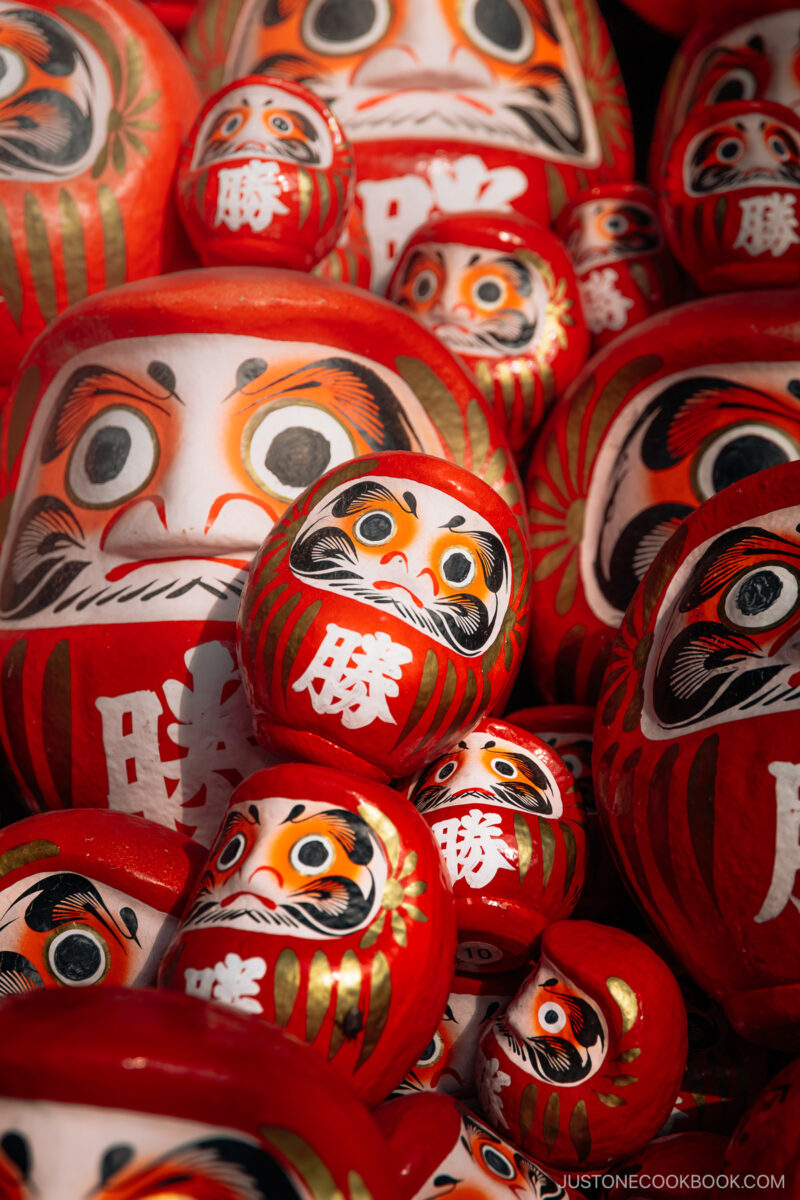
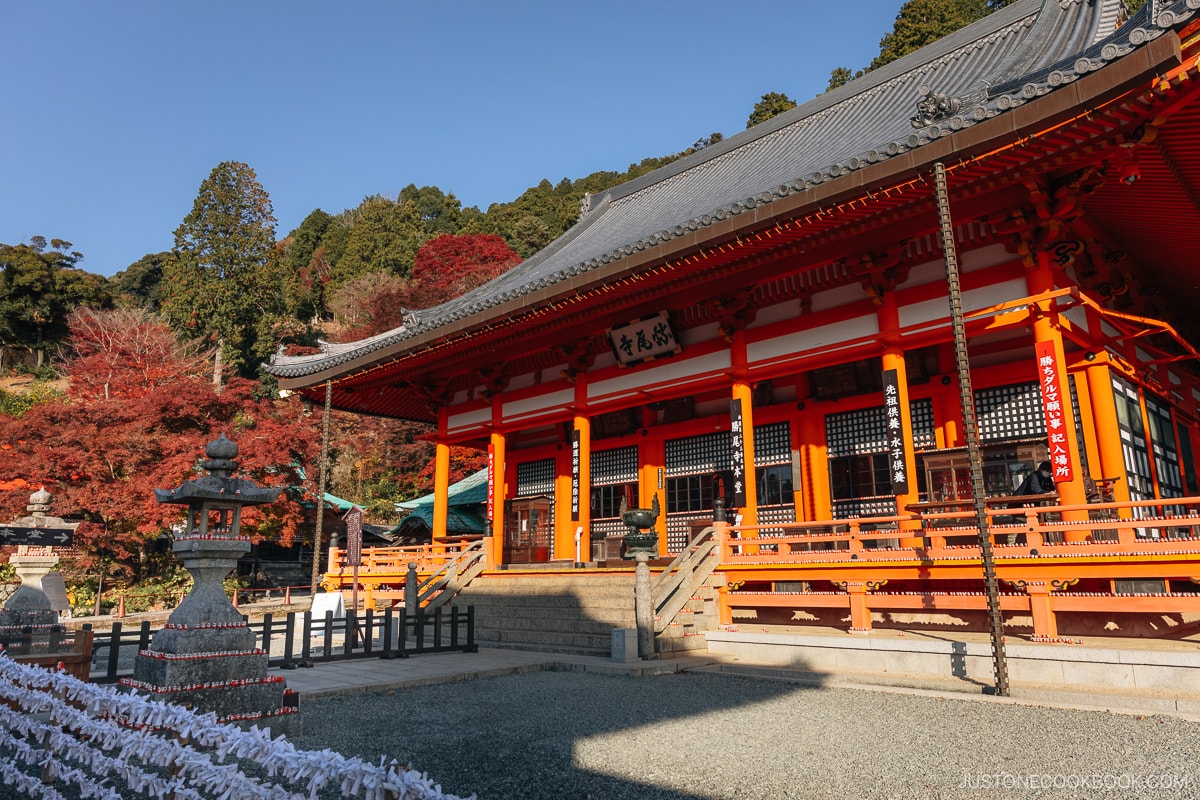
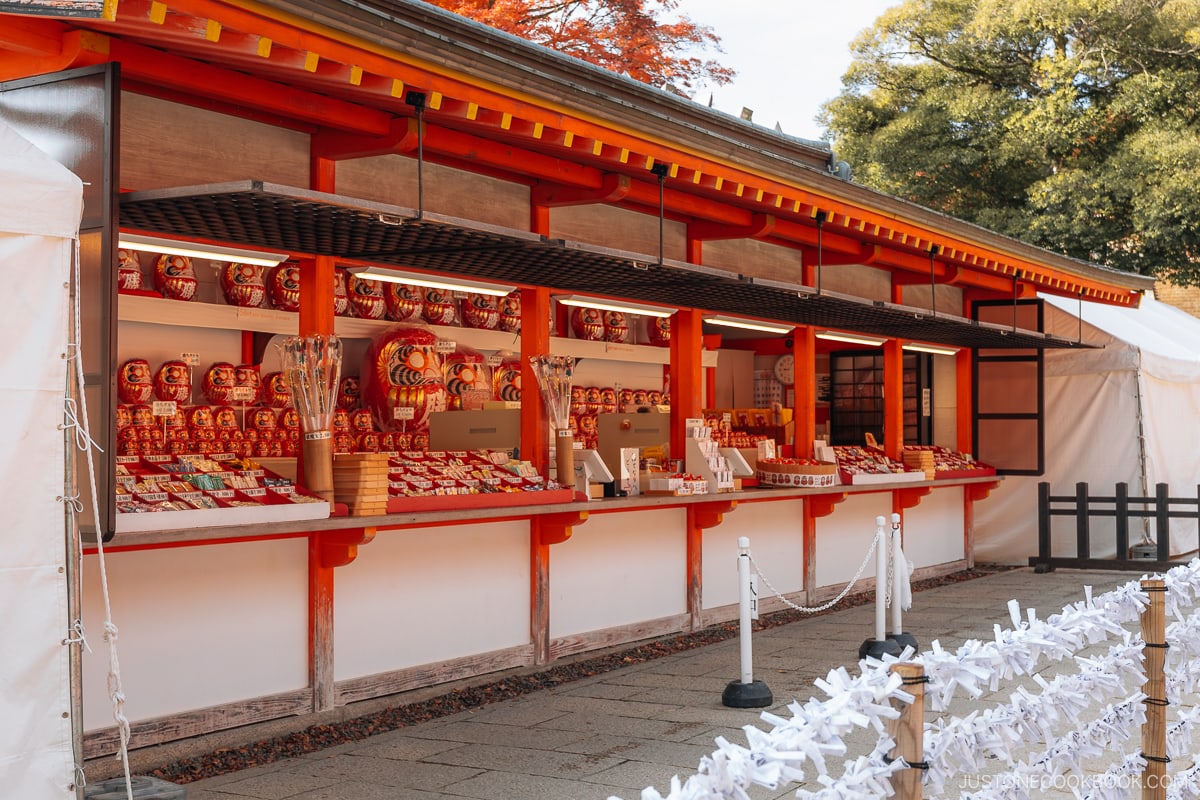
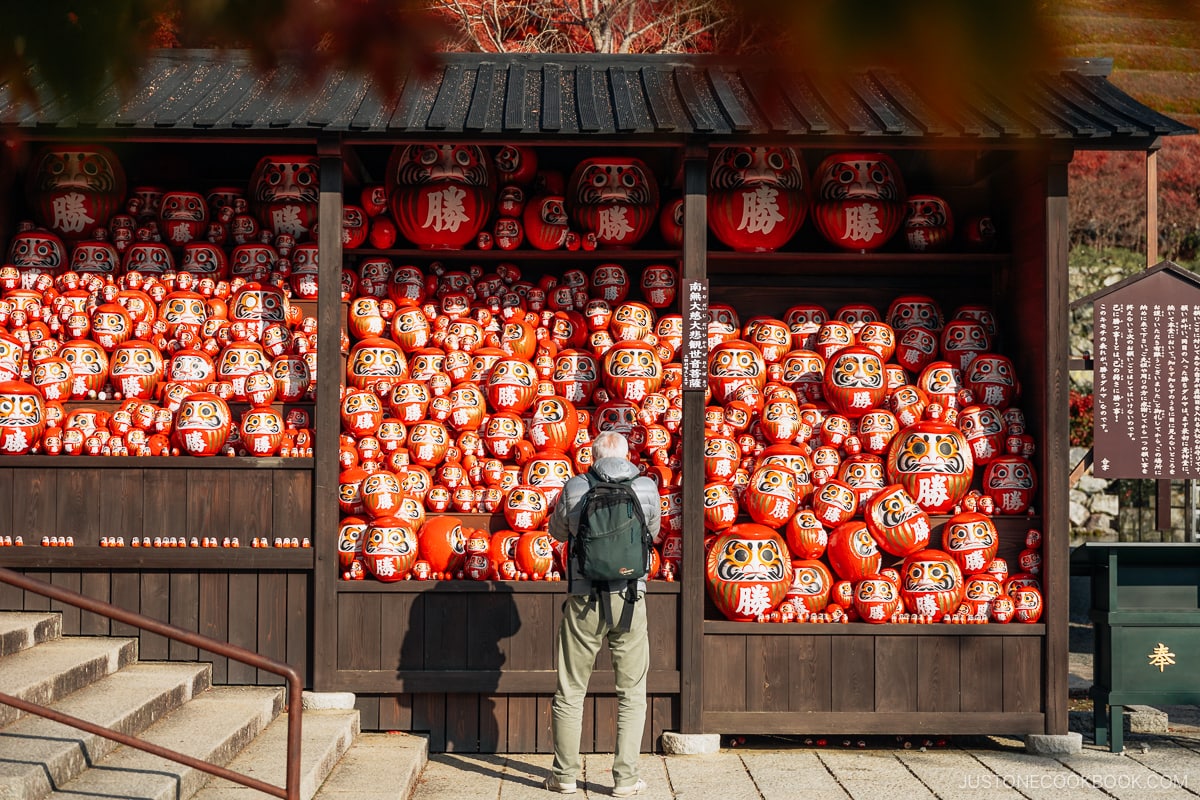
From the main hall, you can oversee the entire temple grounds. Once you’ve finished exploring all the small shrines, statues, and Daruma dolls, you can follow the winding path to the exit.
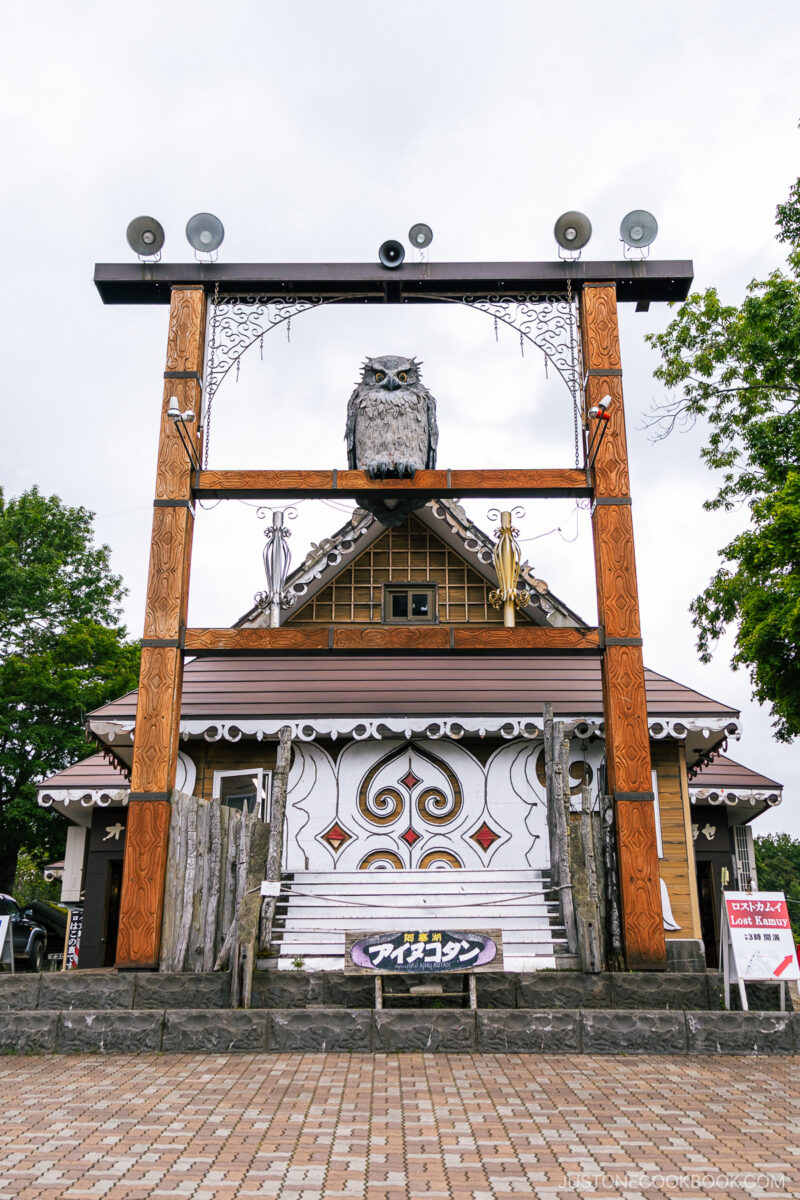
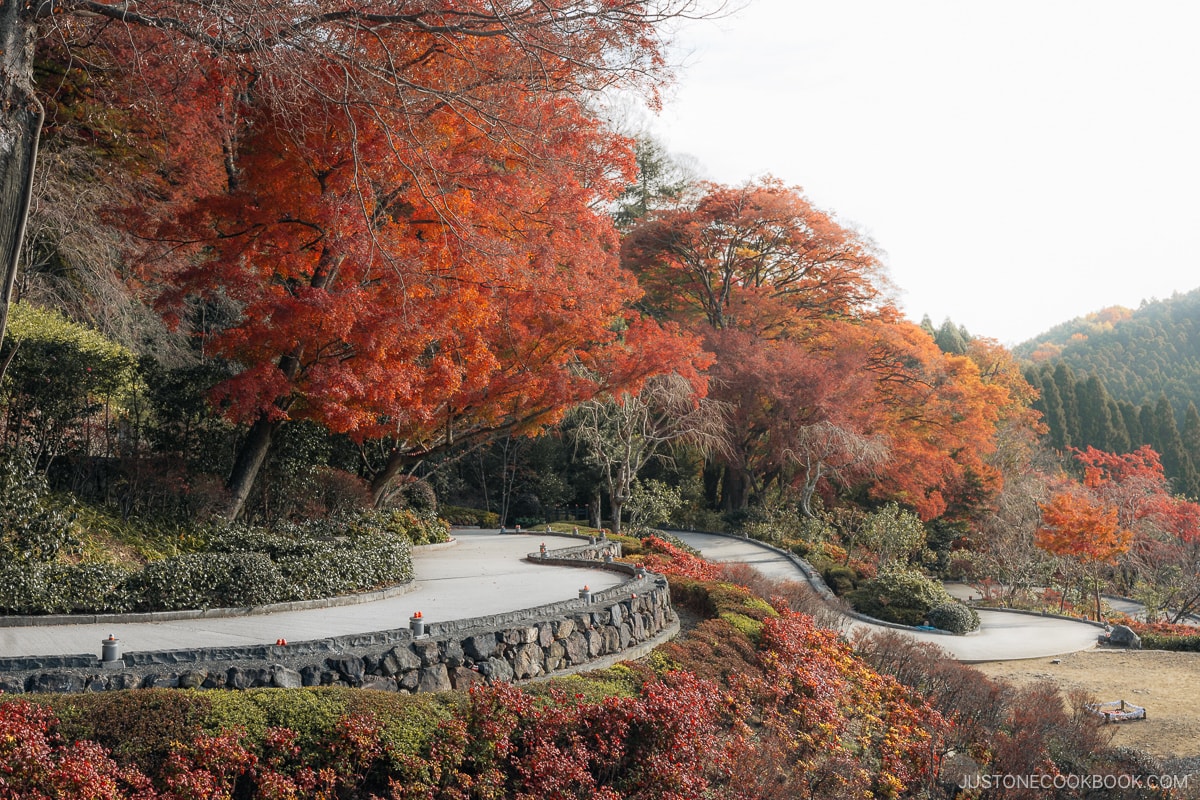
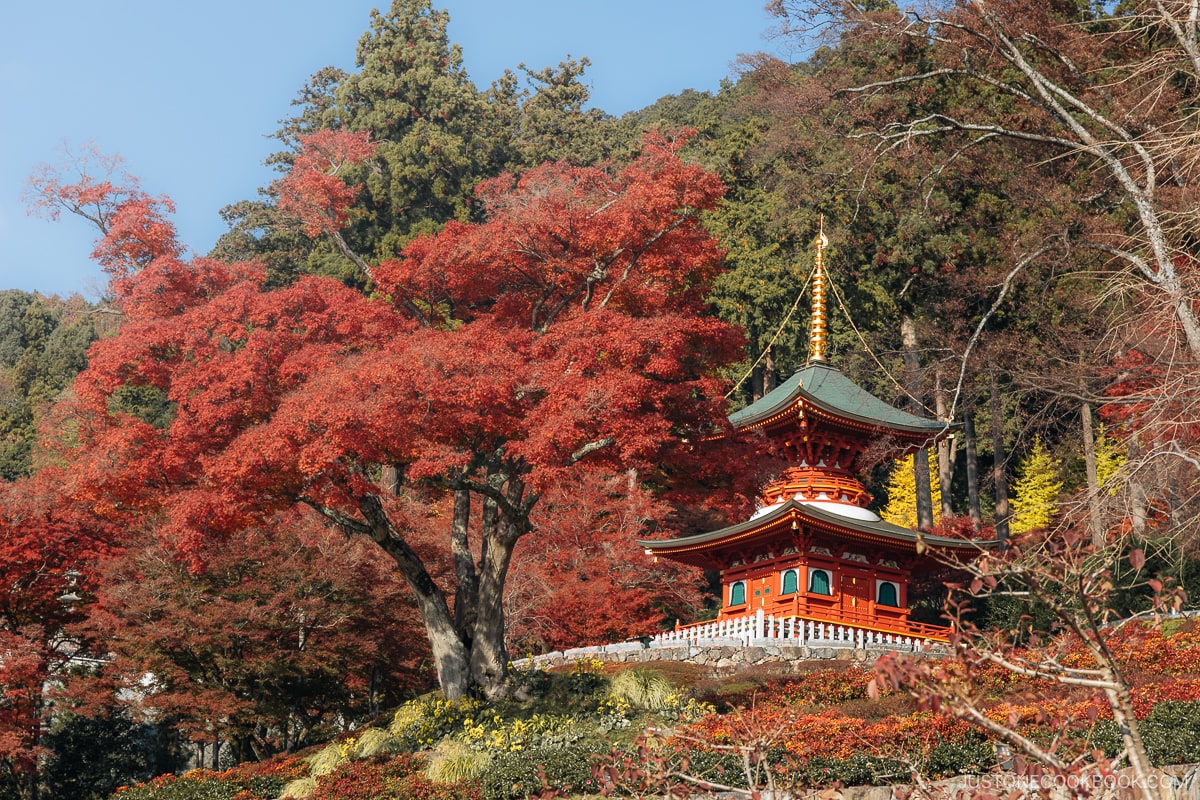
Inside the souvenir shop, you can pick up some Daruma-themed sweets, clothes, and other miscellaneous mementos.
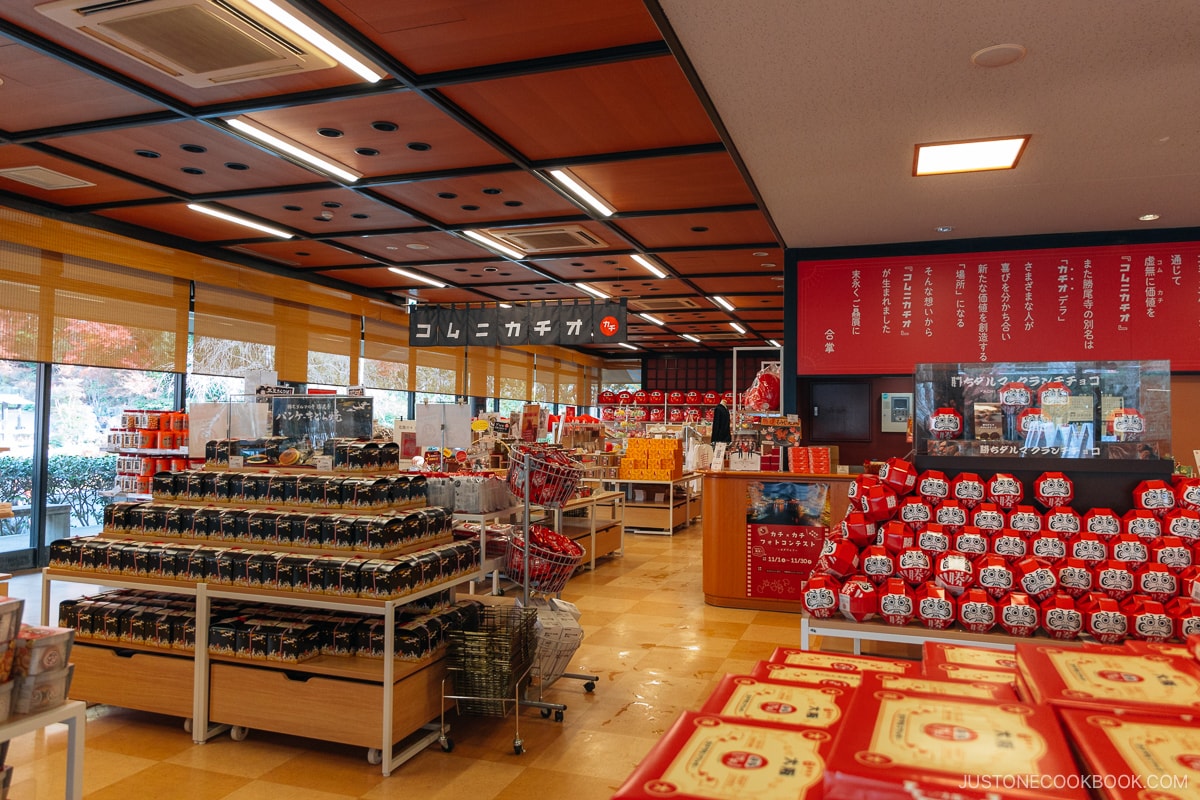
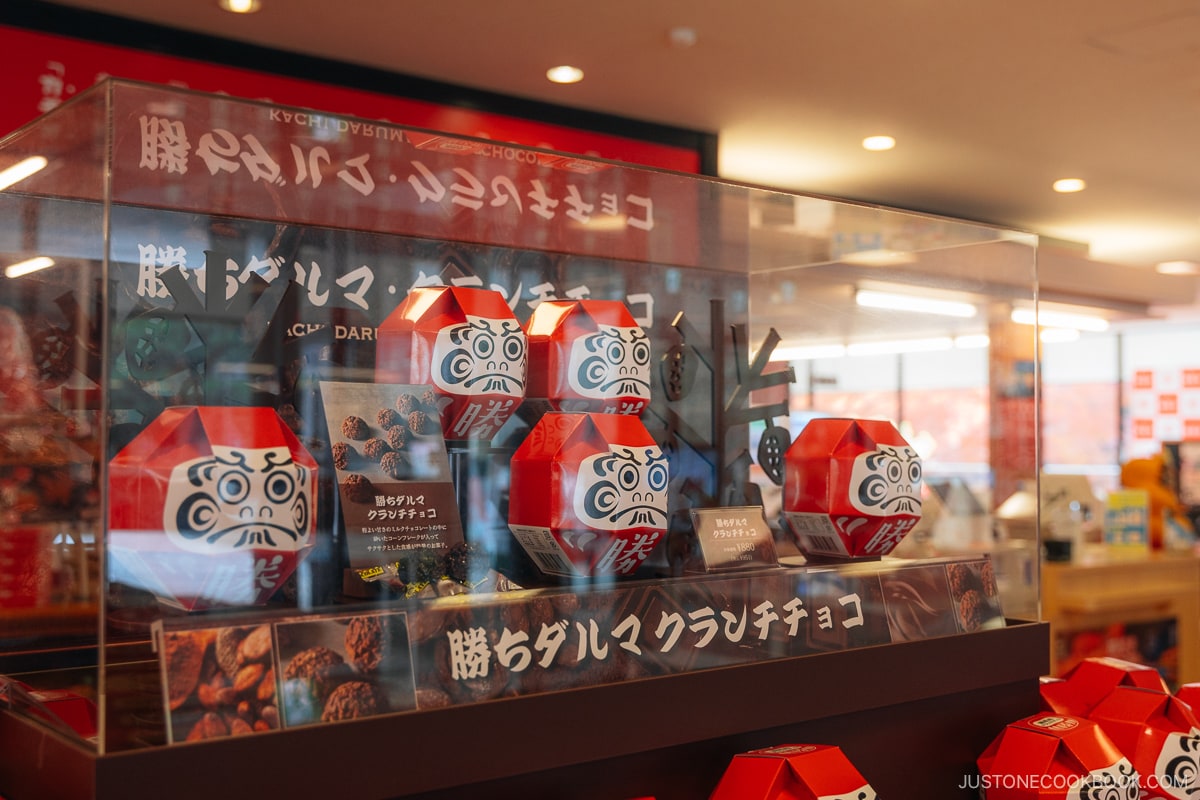
The temple grounds at Katsuo-ji were the most impressive I have seen in Japan.
Hoshida Park Suspension Bridge
Also known as Hoshi no Buranko (星のブランコ), this suspension bridge is situated in Hoshida Park (ほしだ園地) in the northern part of the Ikoma Mountains, between the borders of Osaka and Nara. Given its location a little far from the city center, it makes for a great day trip.
From Osaka, you’ll need to board the Katano Line Local Line from Hirakata Station to Kisaichi Station, followed by another 30-minute walk. Alternatively, there is another entrance (opposite “Grandfather’s Clock” on Google Maps) marked by a red torii gate, which you can reach by car. Since I was driving, I opted for the latter.
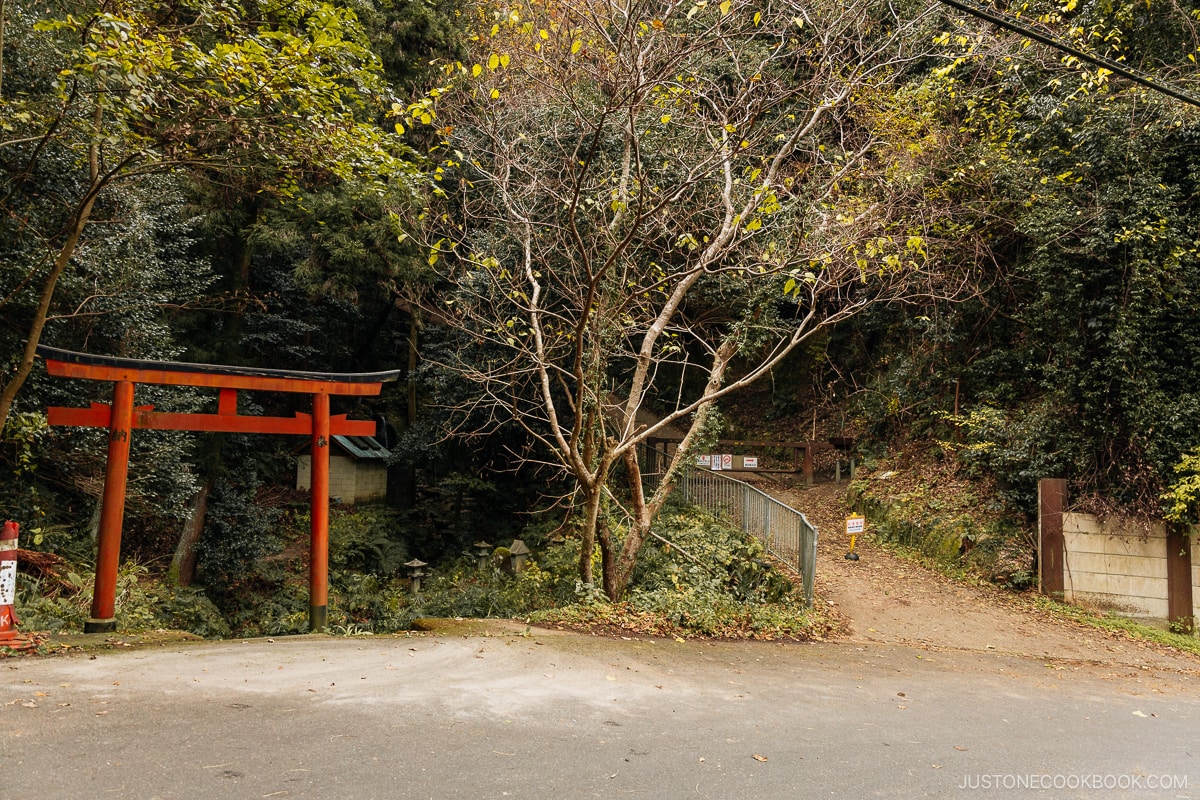
The first entrance I mentioned passes through a cafe, a climbing wall, and various wooden bridges. On the other hand, the entrance I took is a simple path through the autumn leaves, with a rather steep incline. Along the way, there were rest stops and benches where people enjoyed lunch.
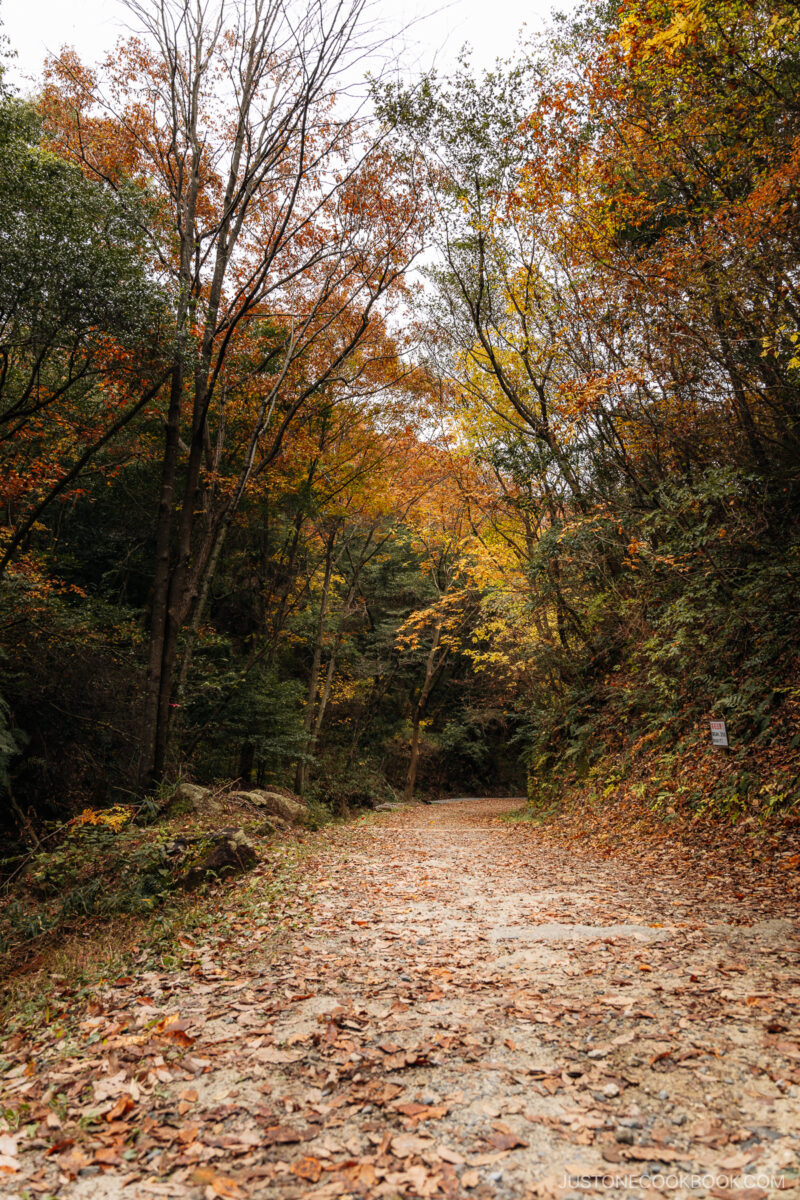
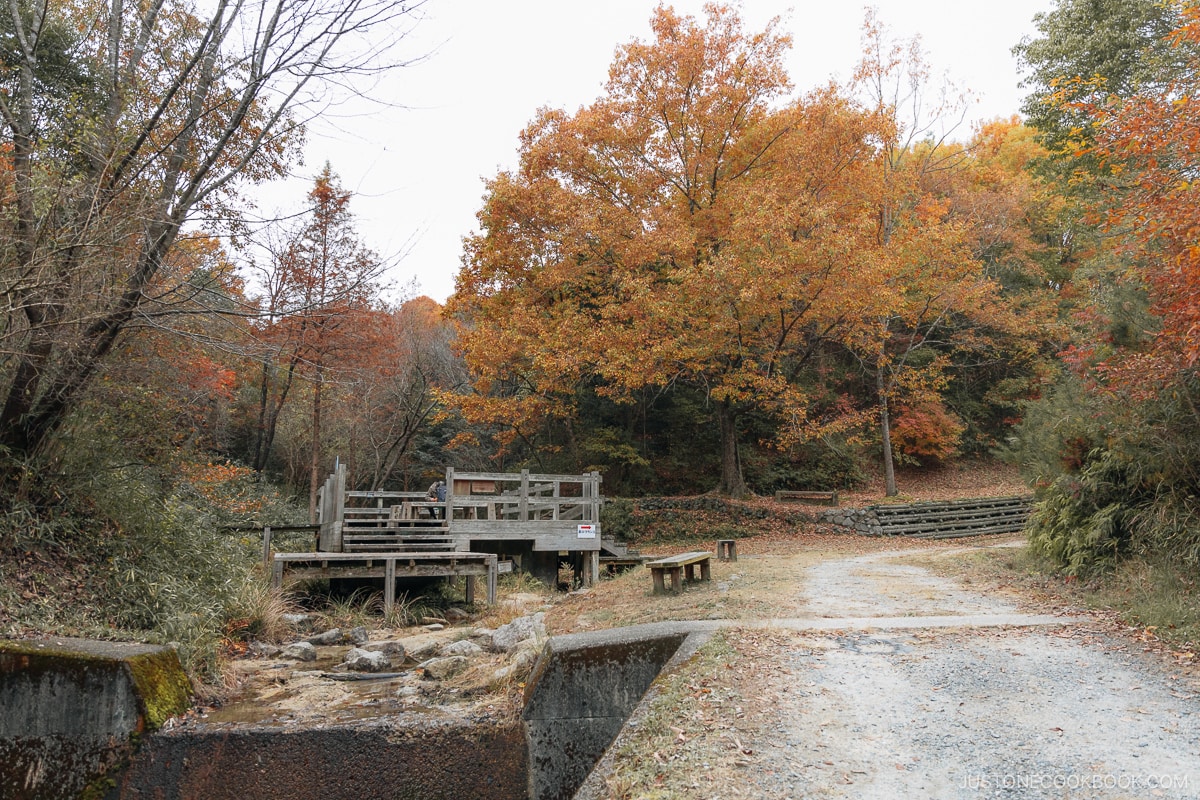
After hiking for around 20 minutes, you can find Hoshi no Buranko Tenbodai, a small observatory looking over the suspension bridge.
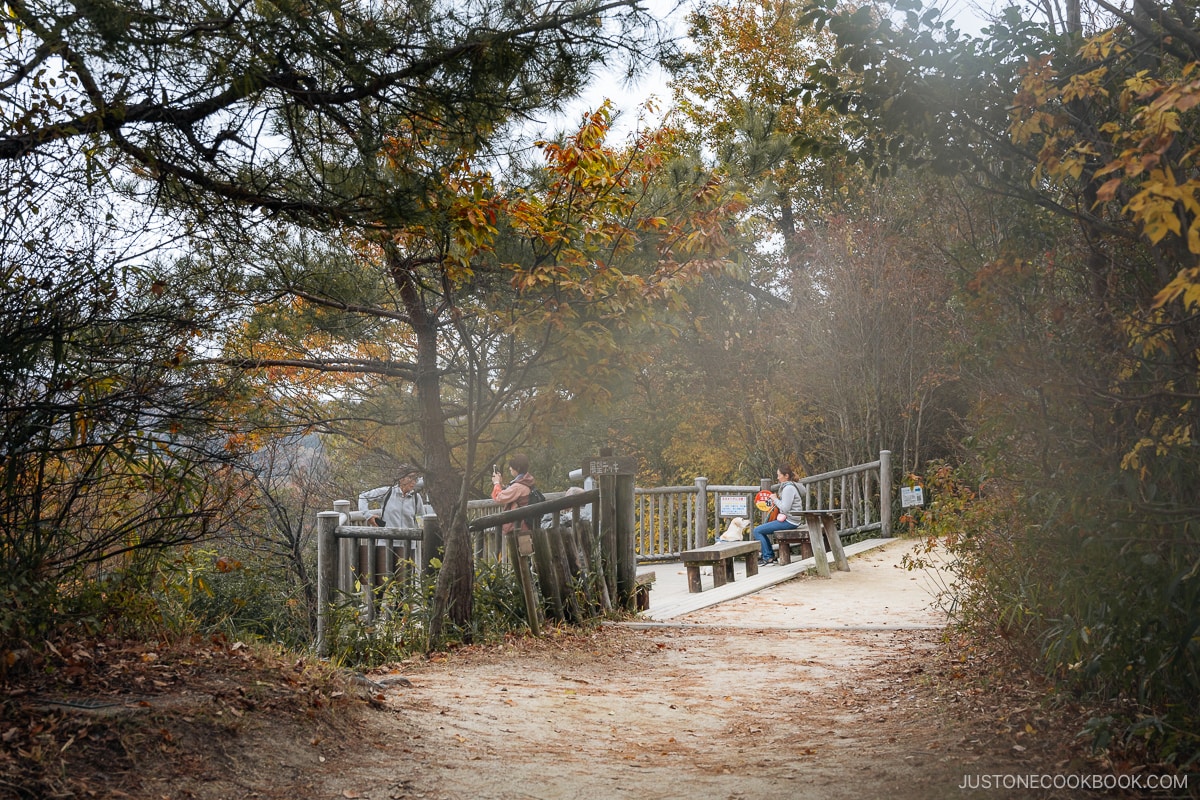
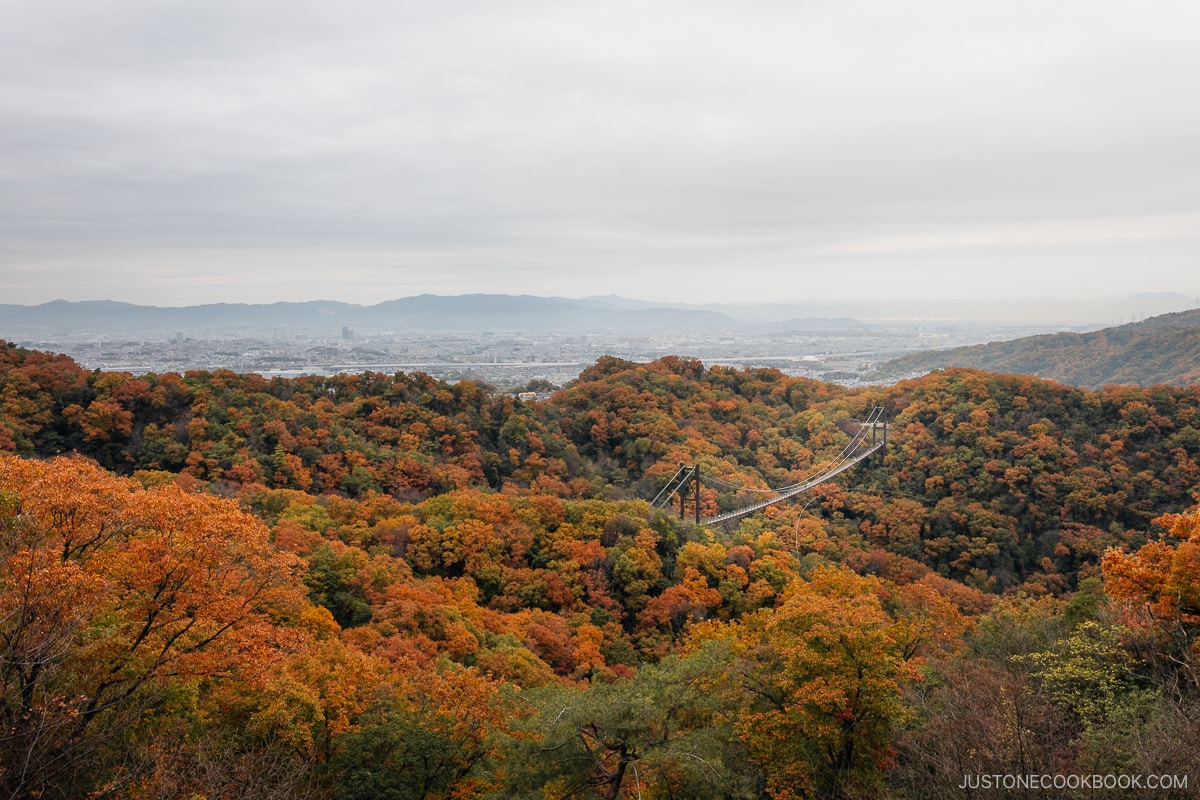
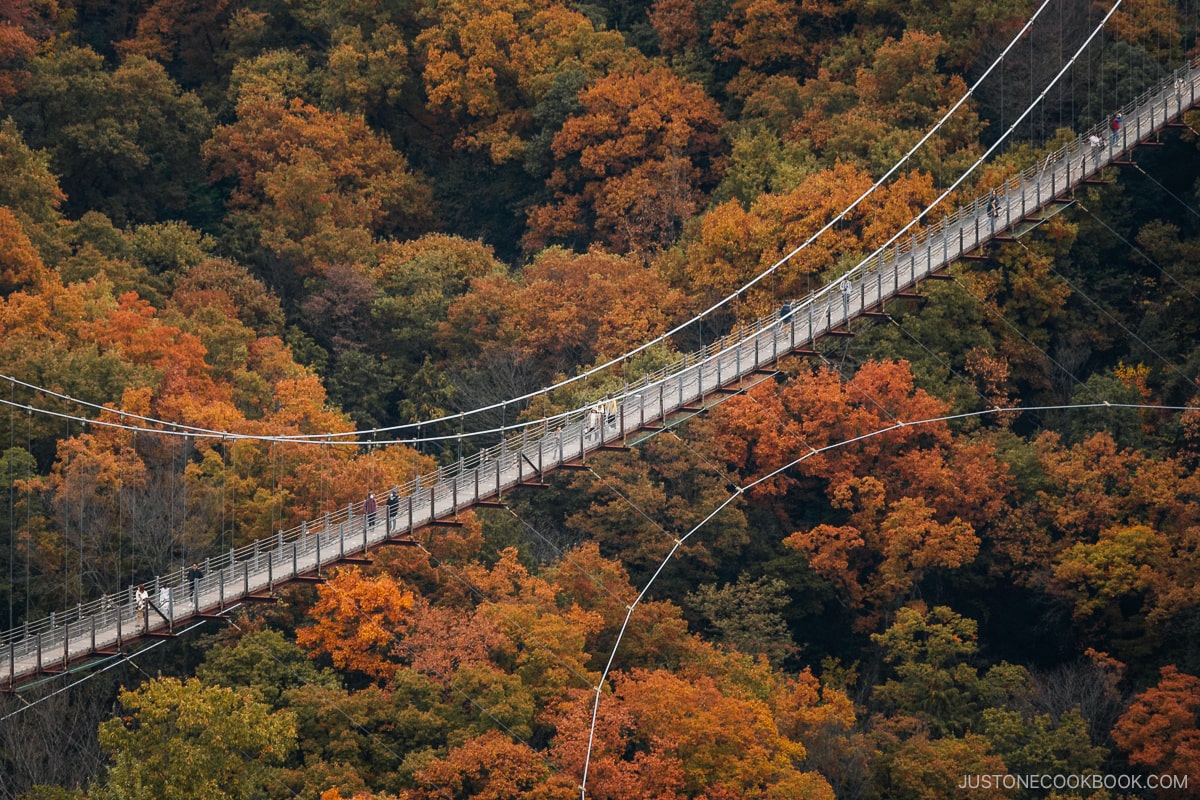
Staying on the main trail will take another five minutes before you reach the suspension bridge, which looks even more impressive up close. It may be hard to believe the colors in the photos, but the mountains and autumn foliage really had that vibrant hue. It felt like walking through a cloud of oranges and yellows.
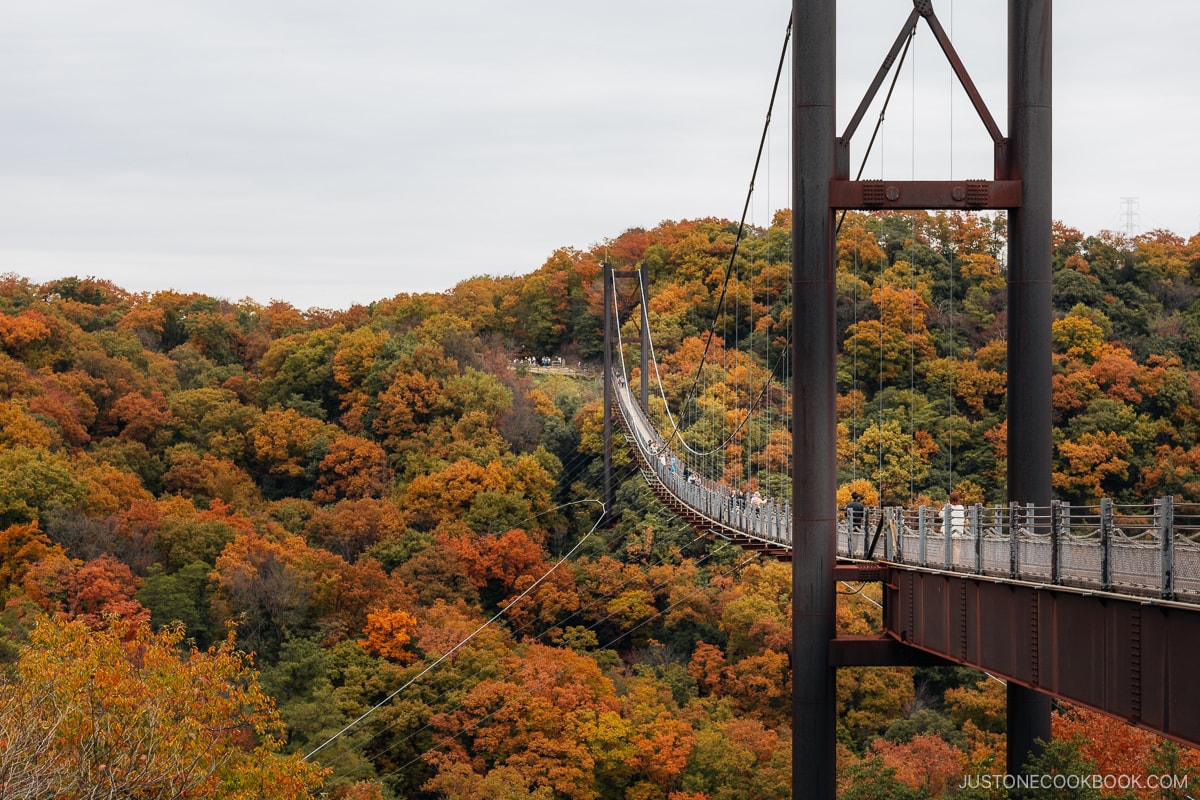
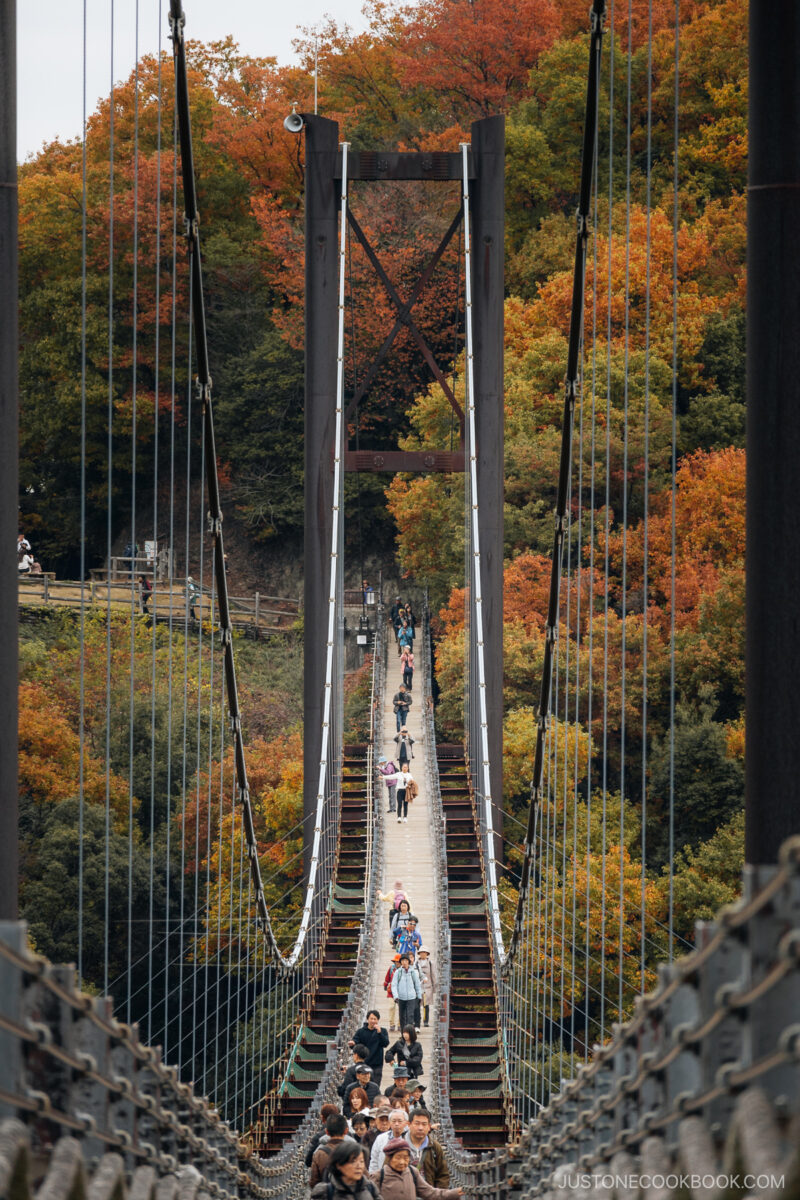
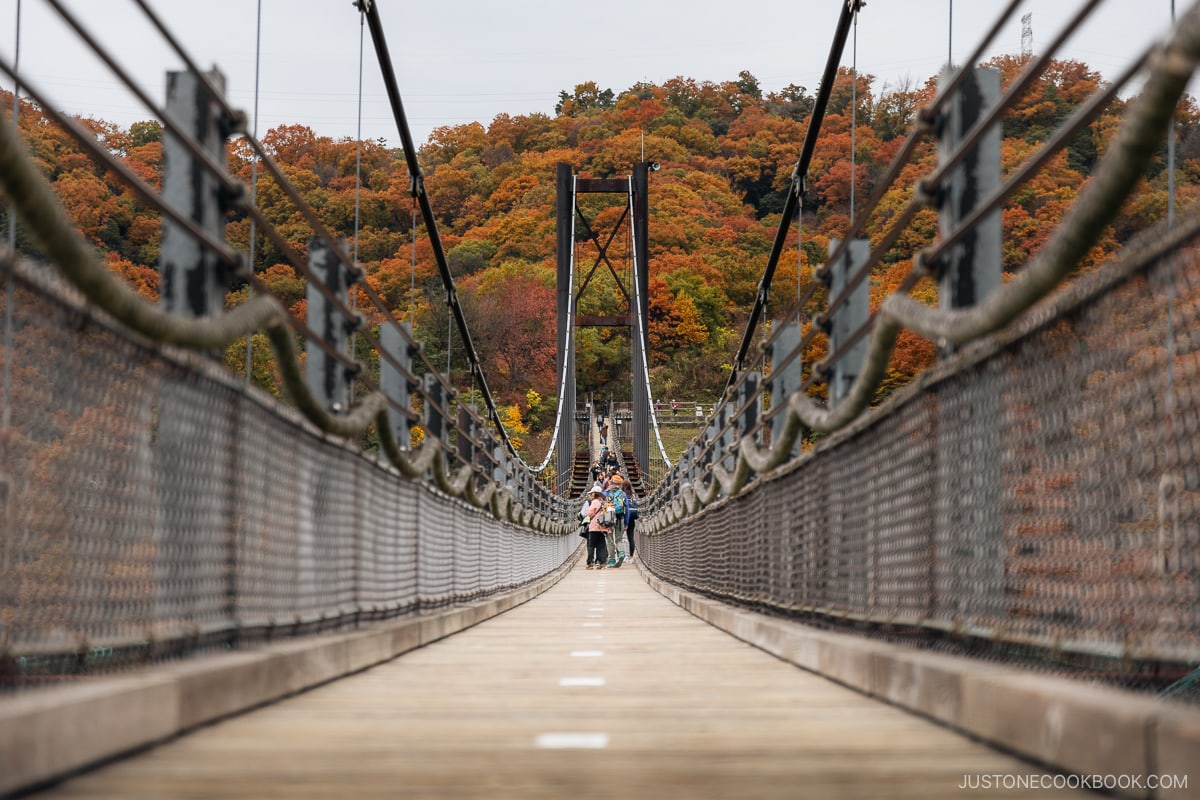
Despite Hoshi no Buranko being a bit far from the city, I highly recommend visiting, as it’s one of the more unique spots to experience the autumnal scenery.
Osaka Castle Park
Every trip to Osaka is incomplete without a visit to one of the most iconic castles in Japan. I decided to take a quick visit as this was my first time experiencing it in autumn. We covered Osaka Castle (大坂城) in depth here.
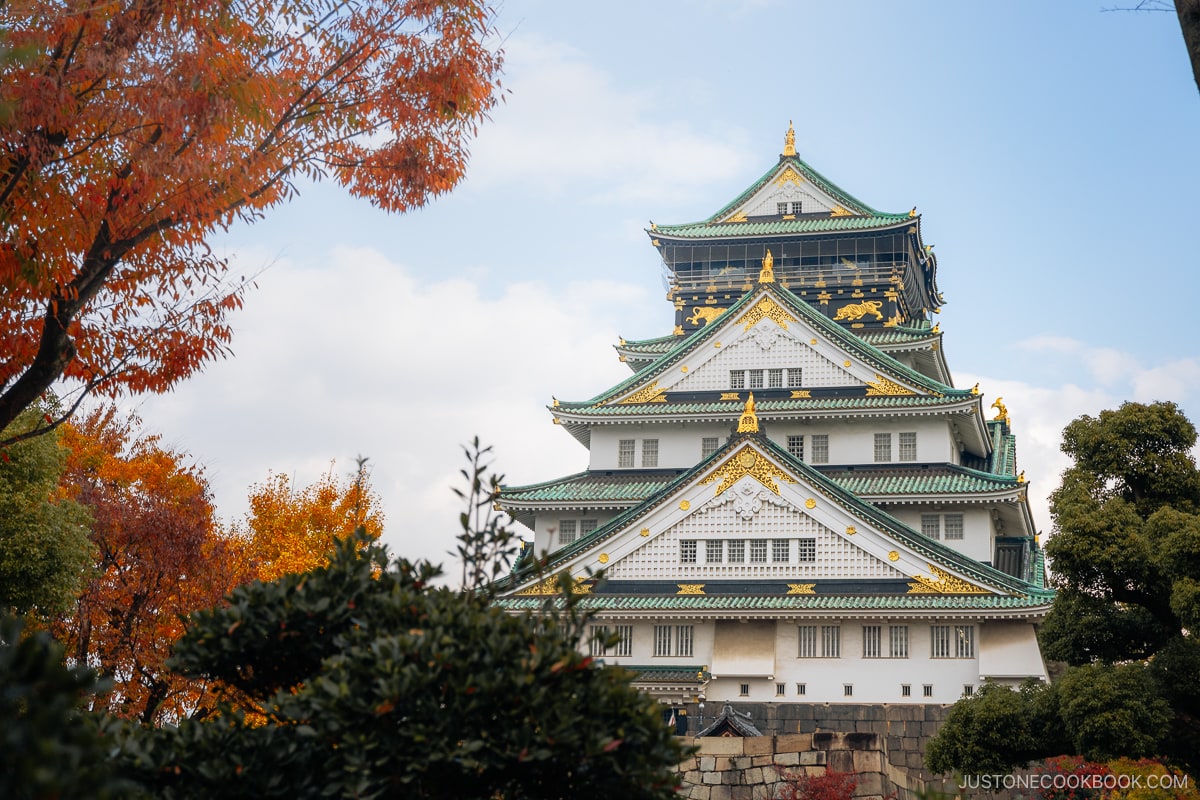
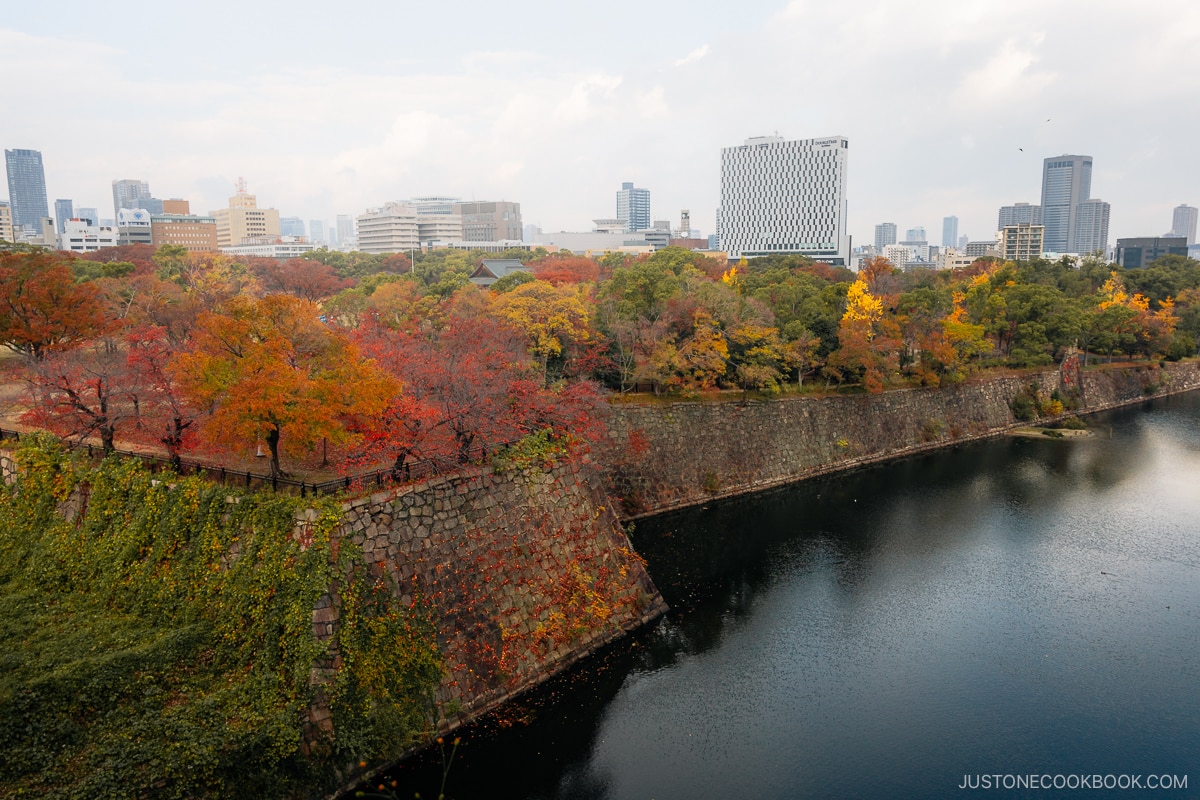
Surrounded by ginkgo trees, the castle looked just as spectacular as I could have imagined!
Another hot spot to see the autumn colors is the Expo ’70 Commemorative Park. Unfortunately, I didn’t have the time to visit, but you can check out our in-depth guide to the park here.
Daisen Park Japanese Garden
Daisen Park (大仙公園) covers approximately 35 hectares, making it perfect for leisurely strolls. On weekends, you’ll find many locals walking their dogs, having a picnic, or relaxing in the picturesque scenery. Apart from autumn, the park is also popular during spring, drawing locals who come to see the fleeting cherry blossoms.
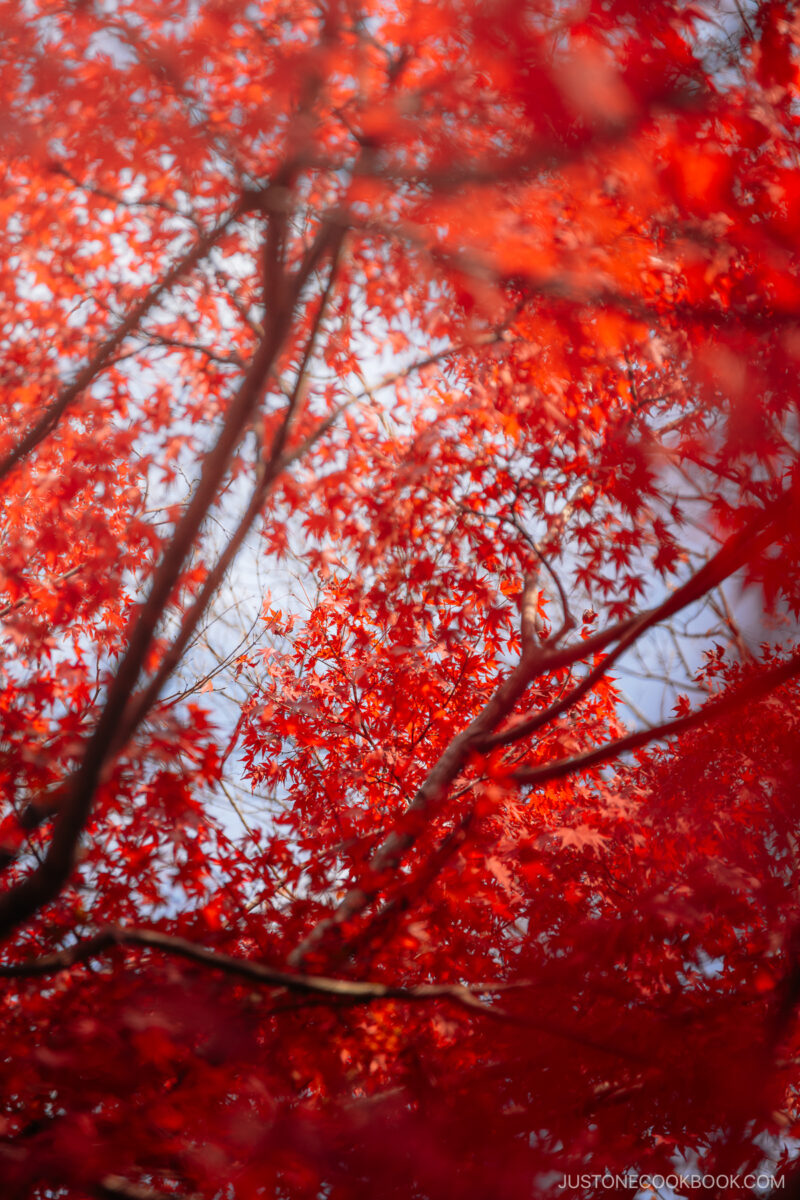
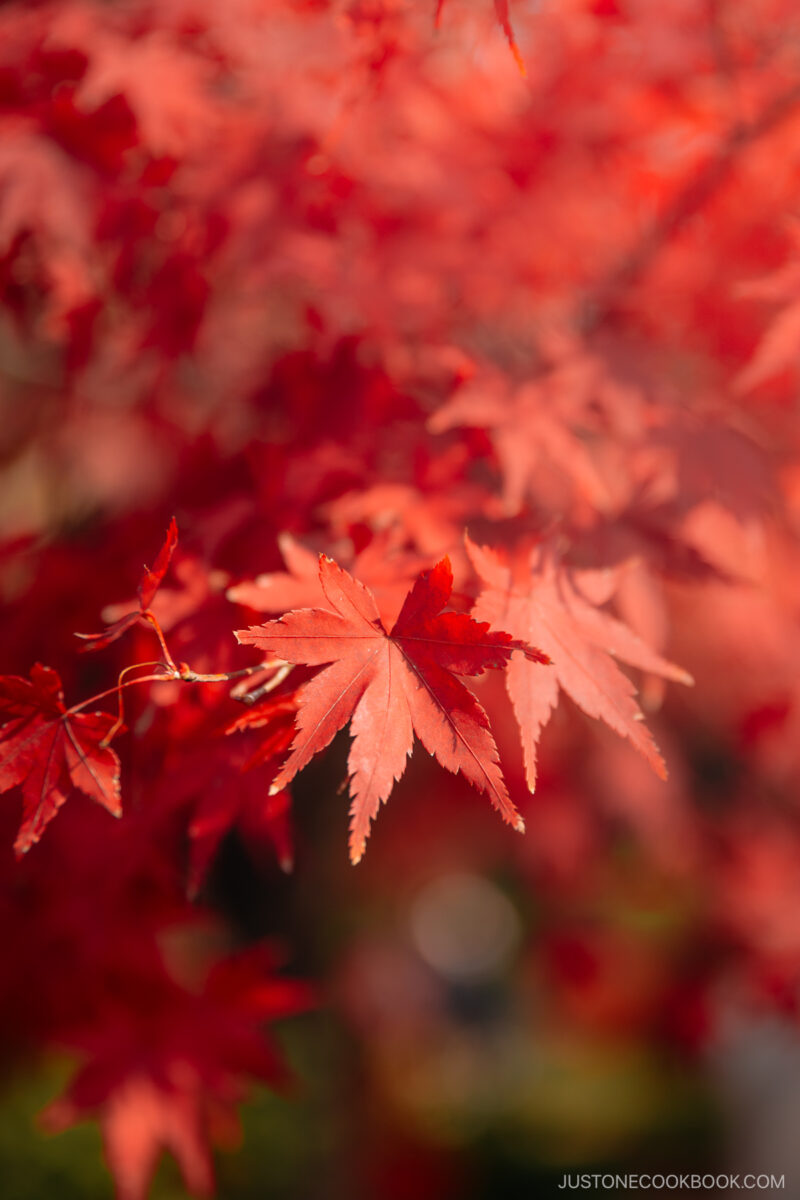
On the park’s western side is a Japanese garden, where you can immerse yourself in traditional Japanese gardening amidst the autumnal colors. Established in 1989 to celebrate the hundredth anniversary of modern Sakai City, the park has been recognized as one of ‘the 100 best historical parks in Japan.’
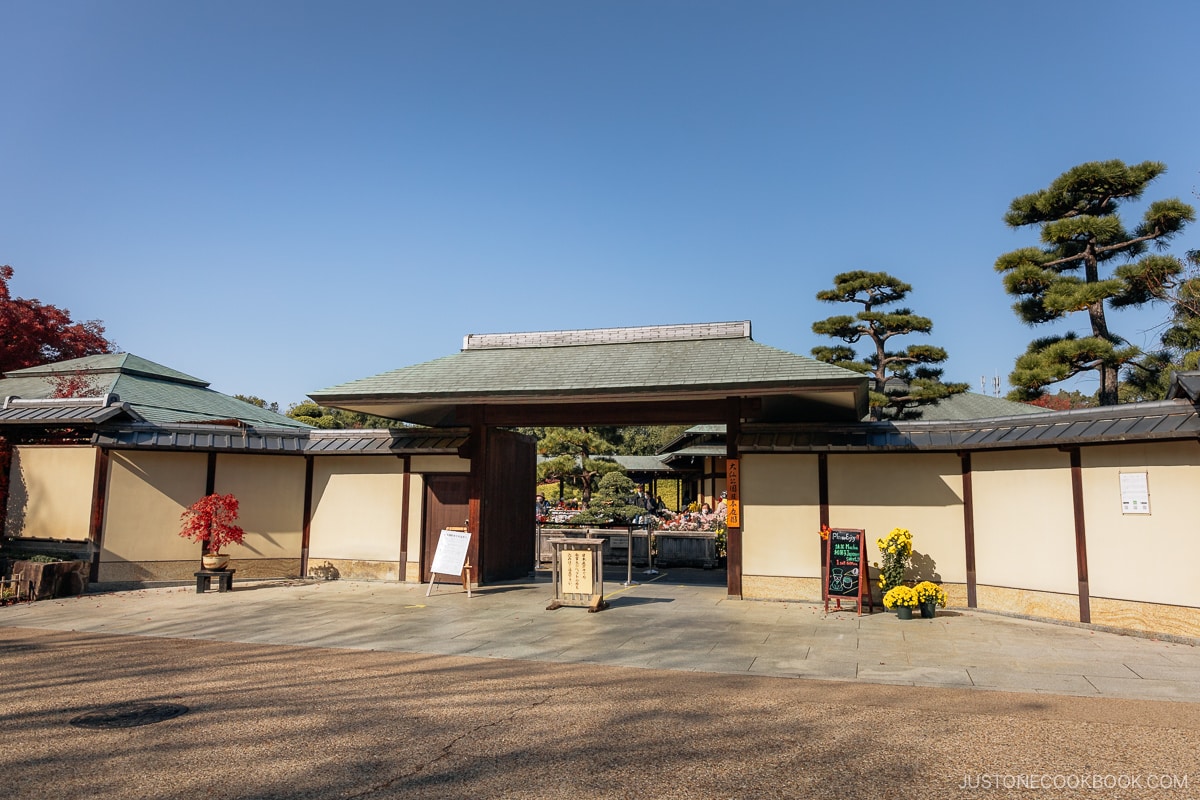
At the entrance, you’ll find a ticket machine where you can purchase your entrance ticket (200 yen). There are also options for a green tea and fresh confectionery set (600 yen) or a green tea and dried confectionery set (500 yen).
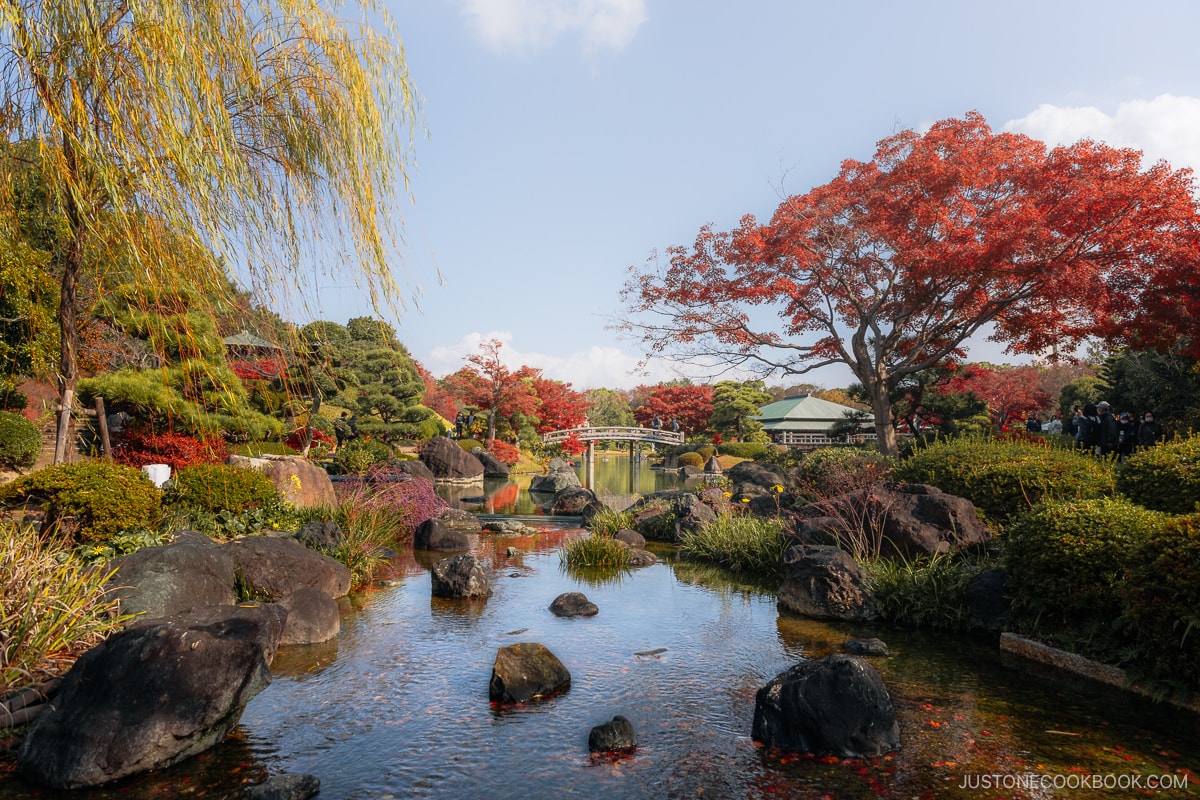
The park features several Japanese bridges, ponds, and a traditional pavilion. Many parts of the garden are inspired by China, reflecting Sakai’s flourishing history as a trading point with them.
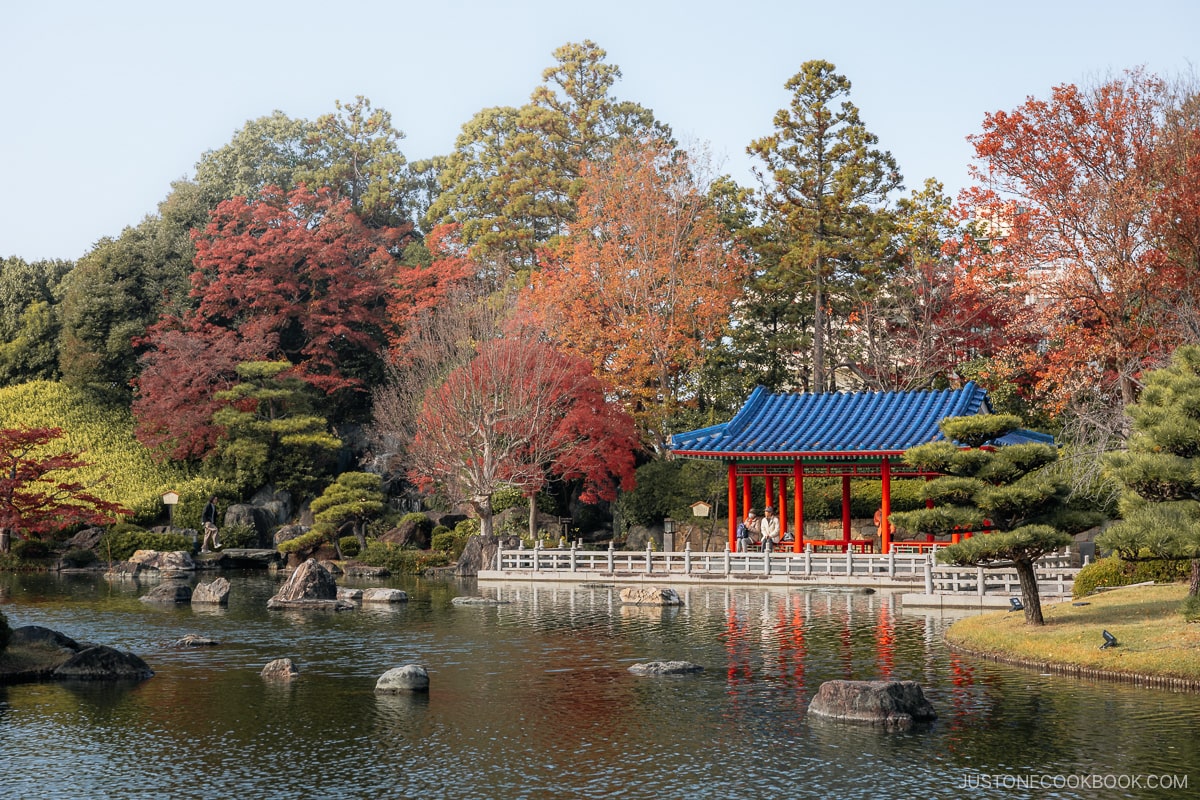
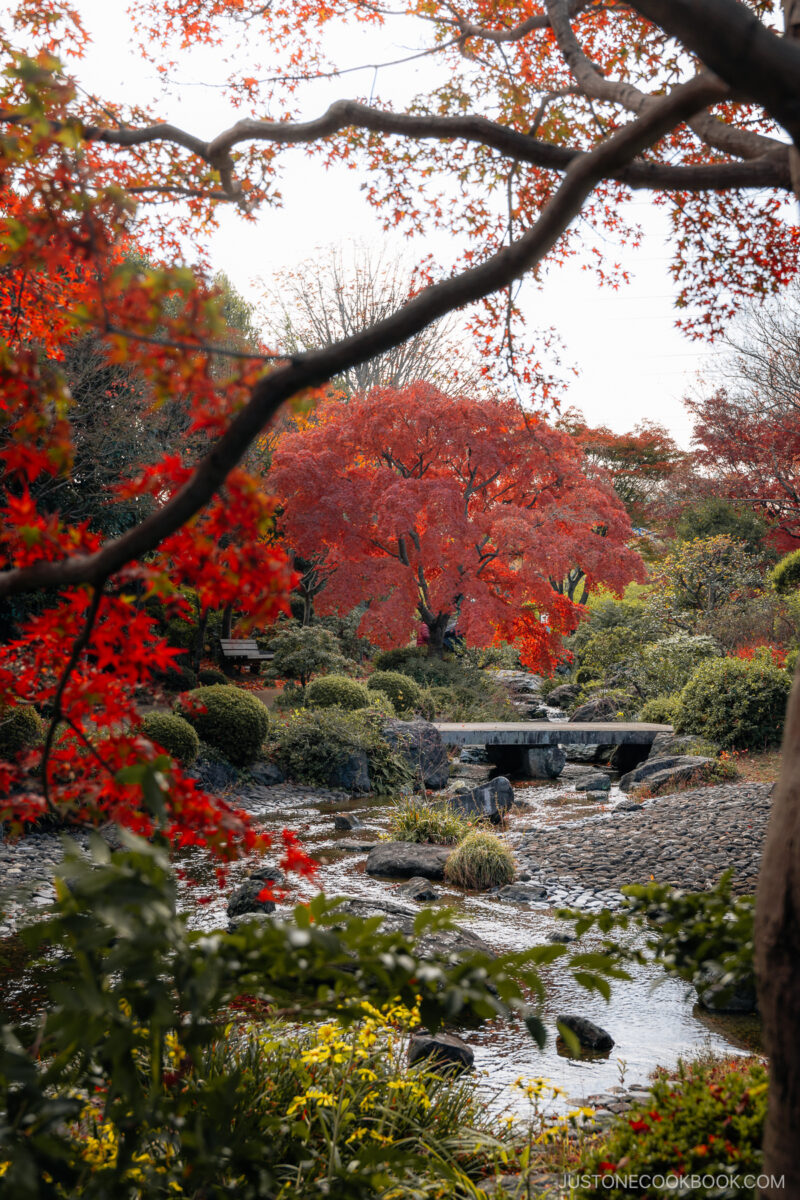
You can enjoy green tea and wagashi (Japanese sweets) inside the pavilion. Unfortunately, I had to catch my flight back to Hokkaido, so there was no wagashi for me this time!
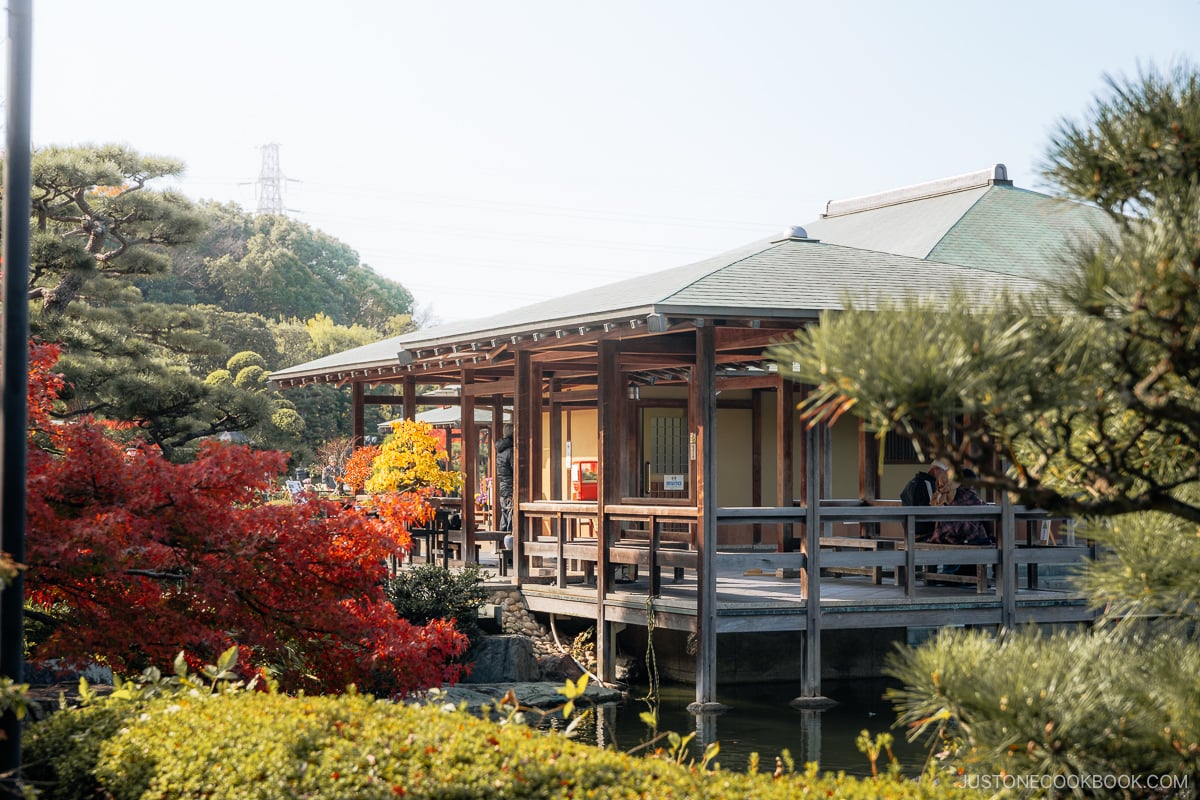
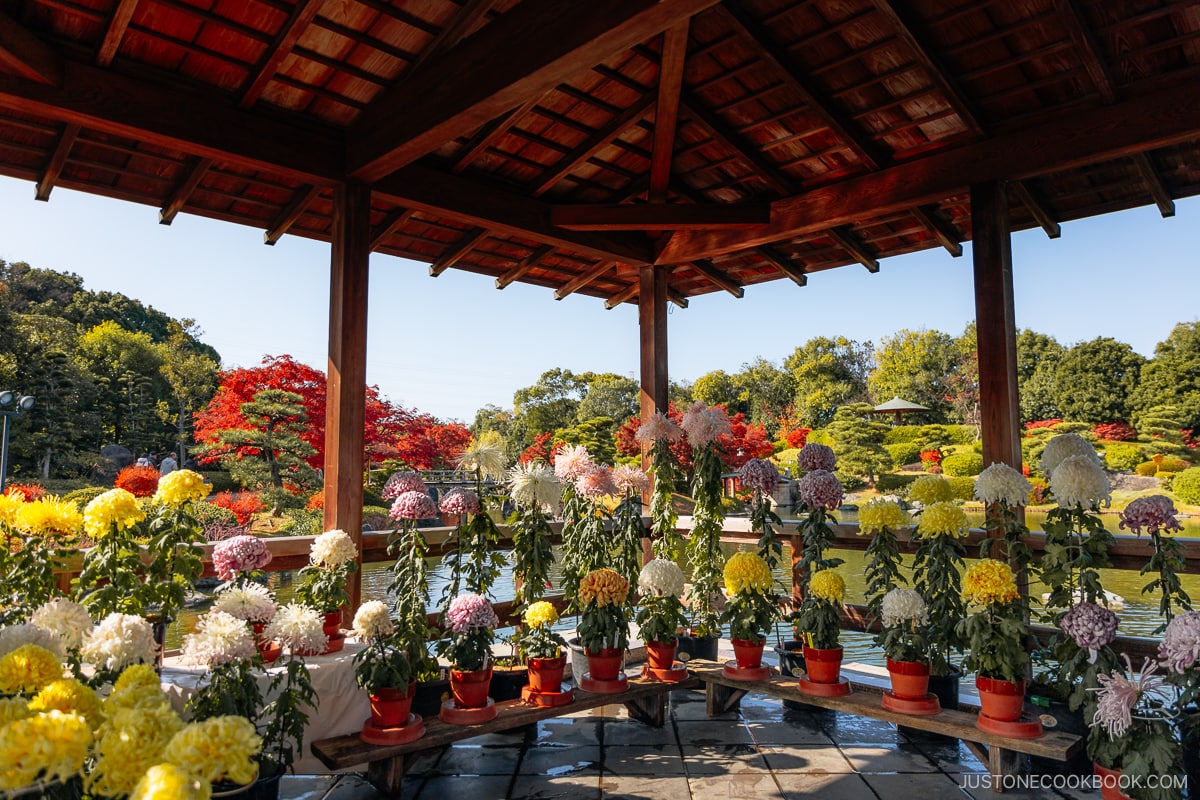
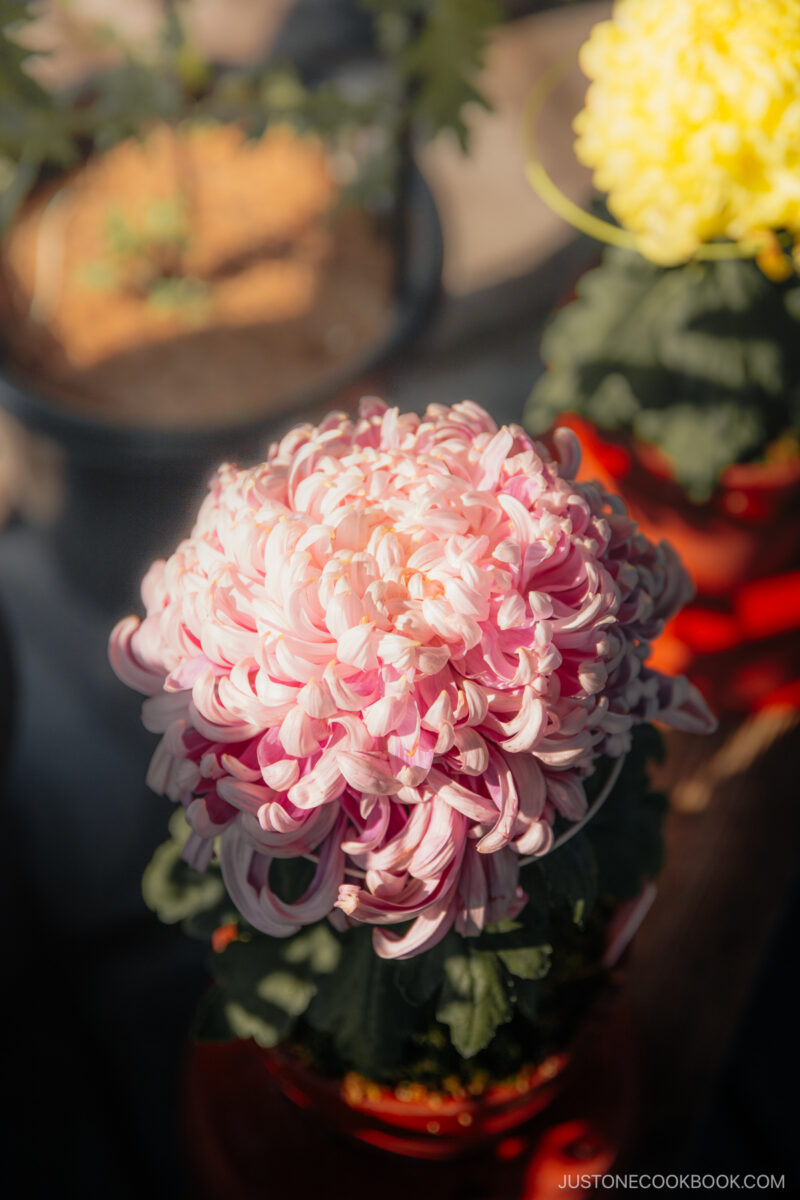
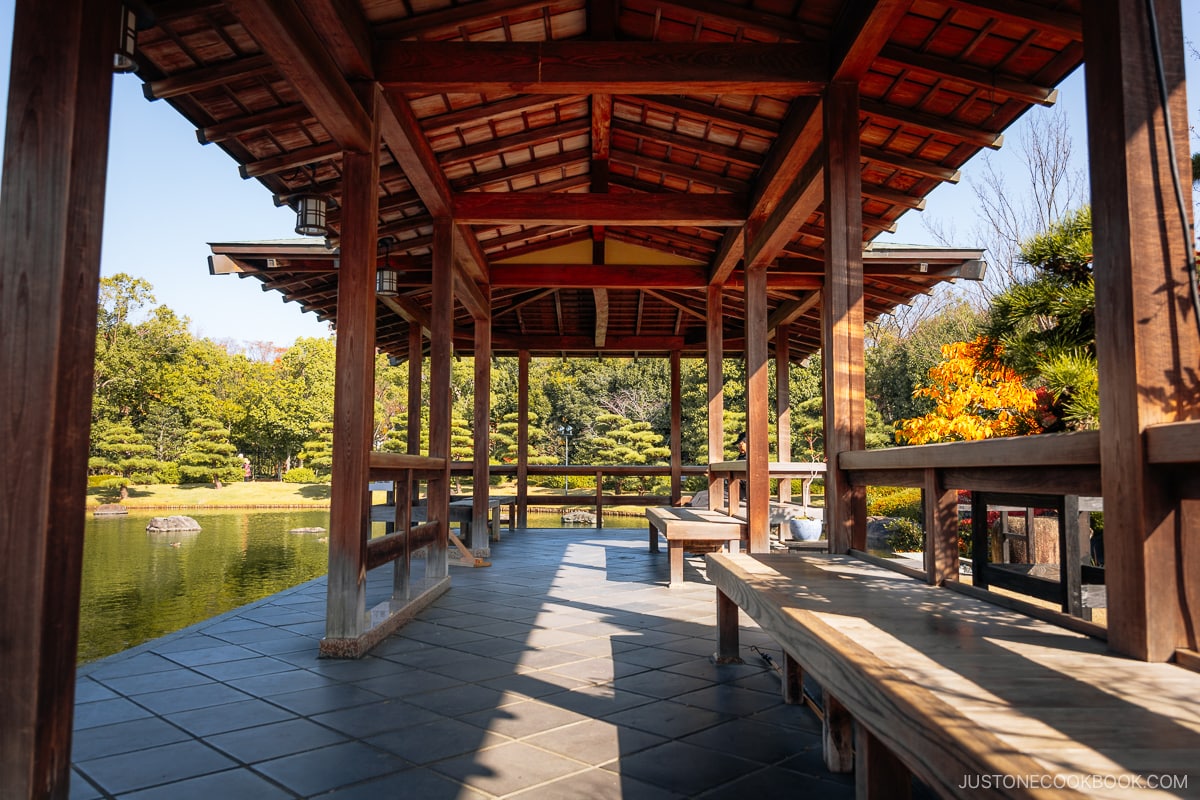
That concludes my four-part series around Kyoto and Osaka’s autumn spots! Japan’s autumn is truly one of the most magical times, and I hope you’ll have the opportunity to experience it for yourself.
Thank you to everyone who read every post that I’ve shared. Feel free to comment down below and let me know where you would like to see next!


